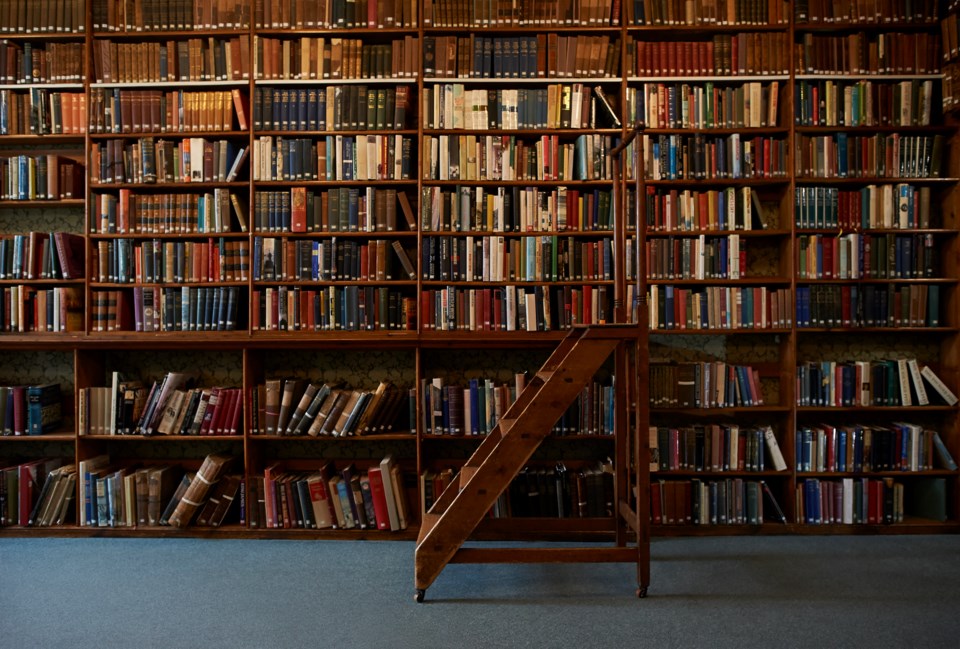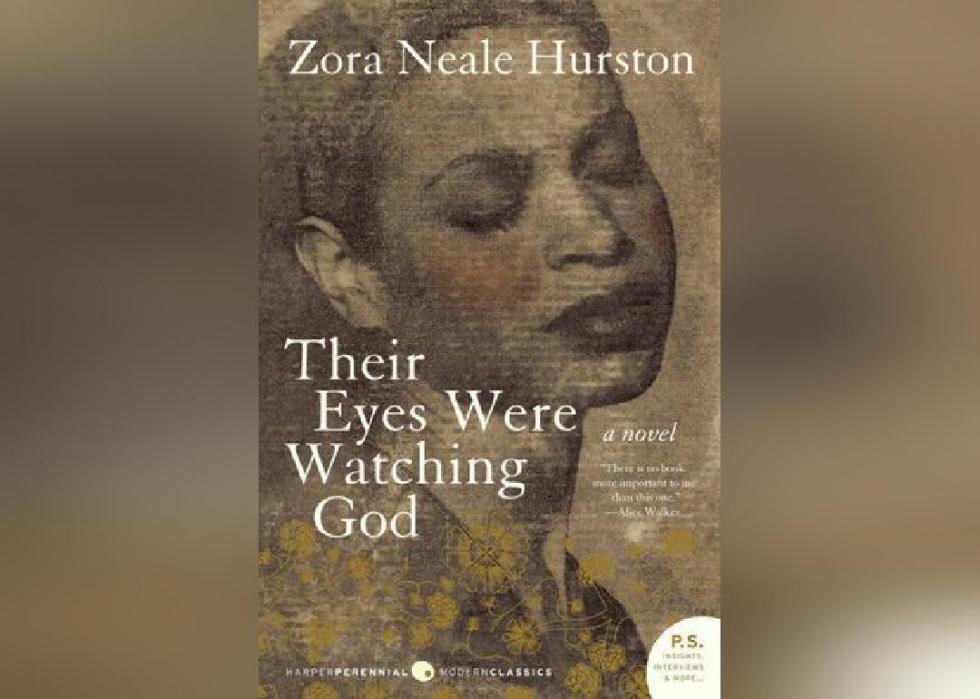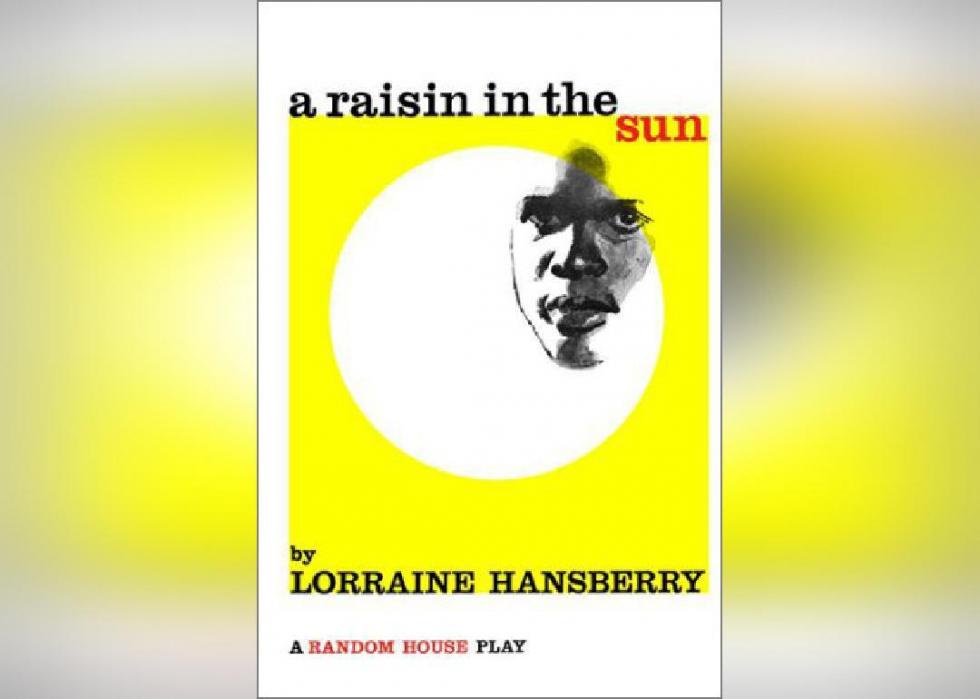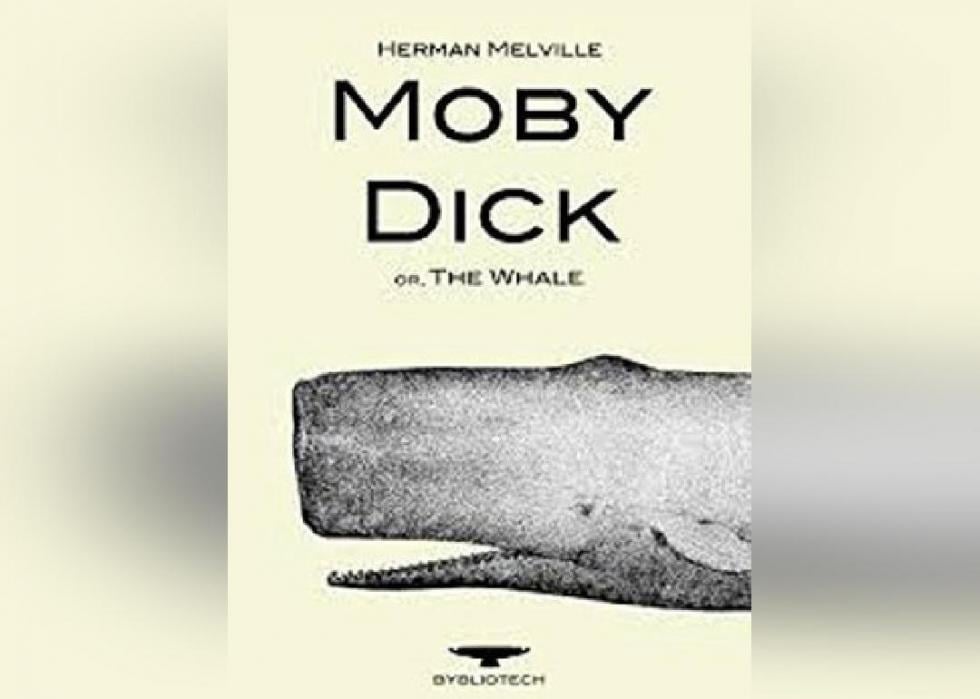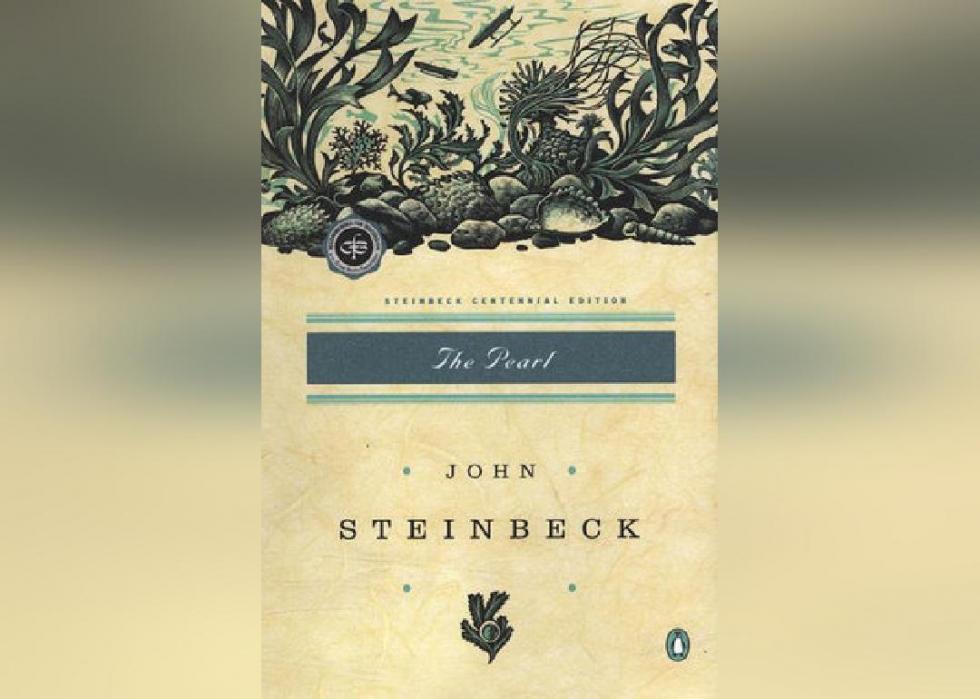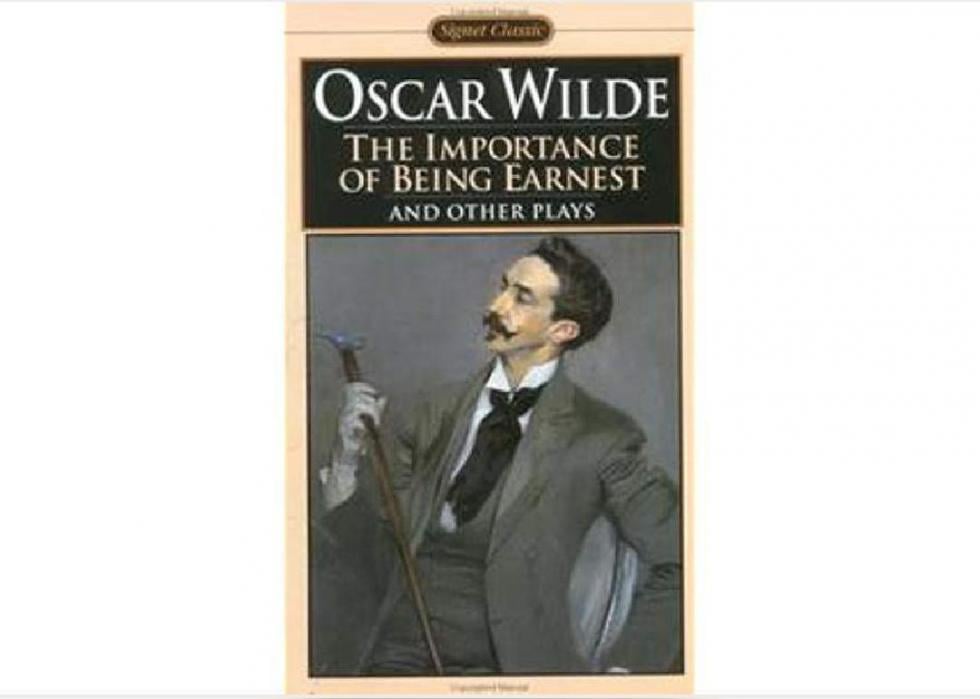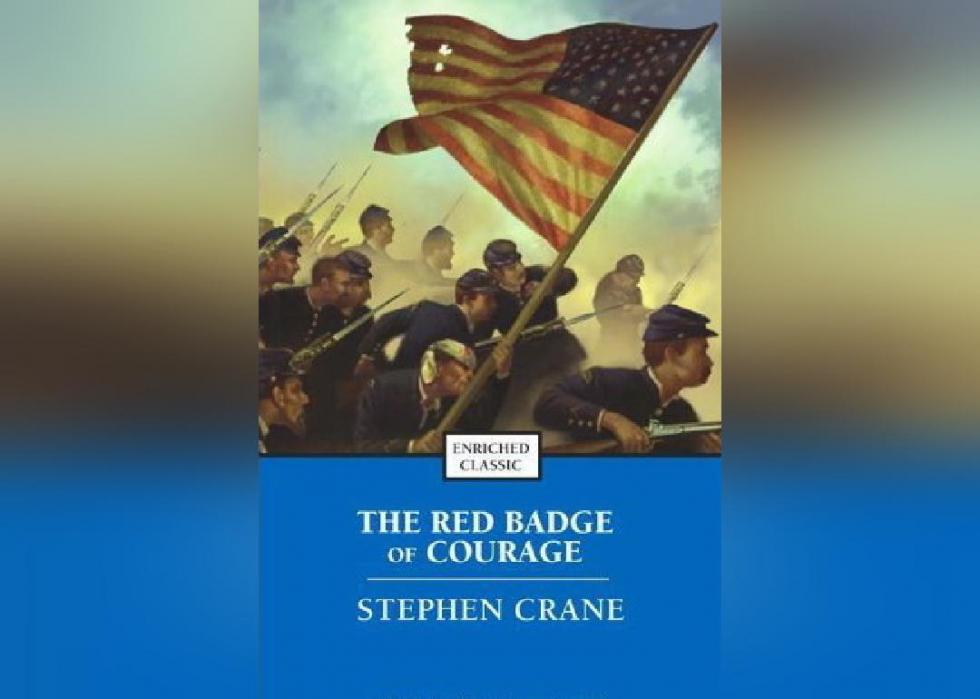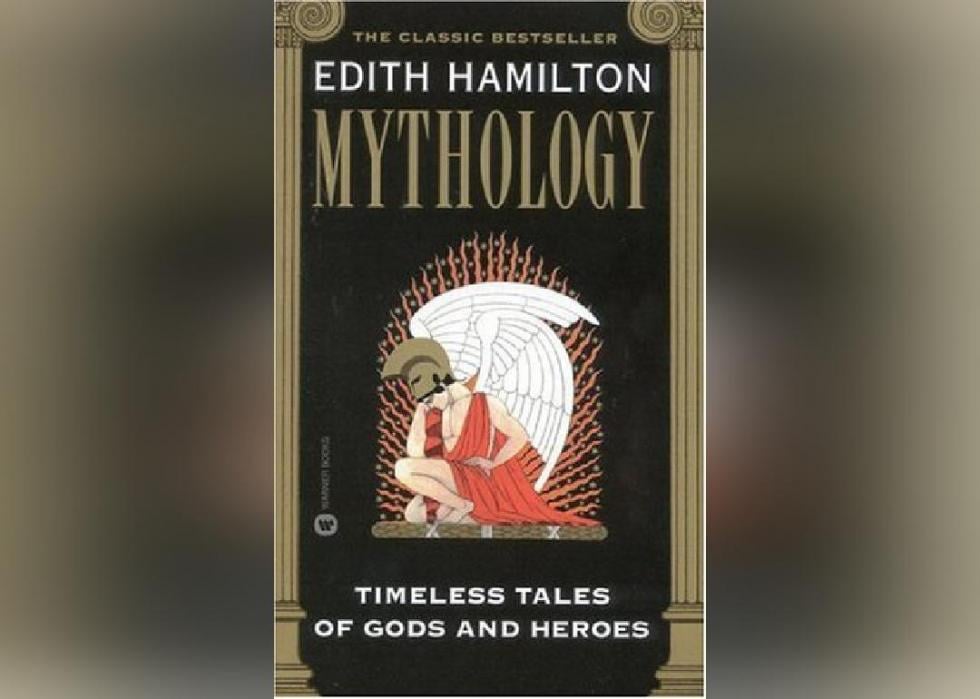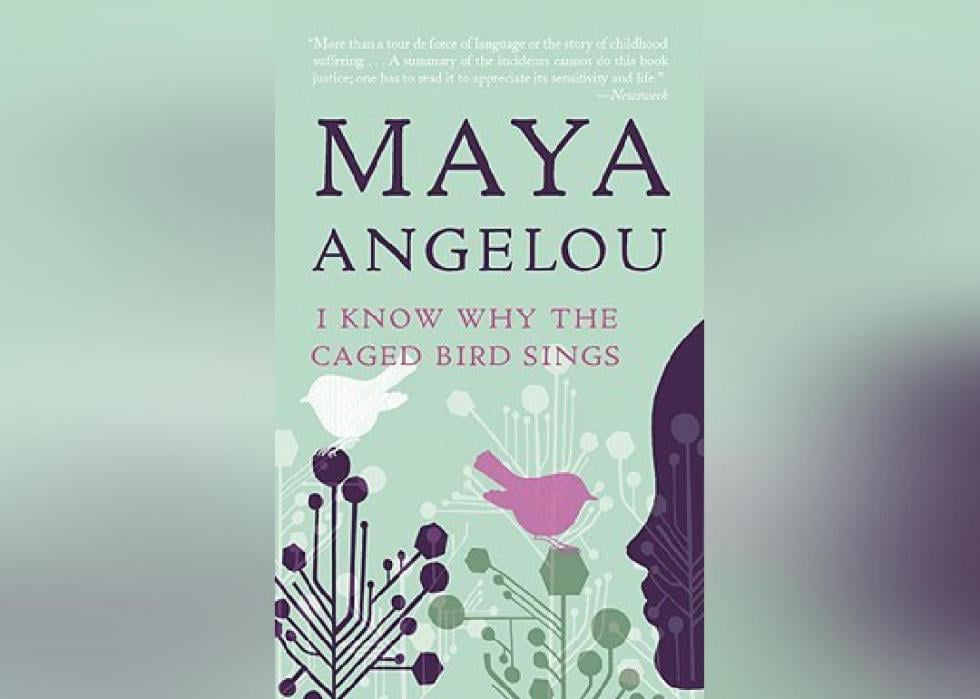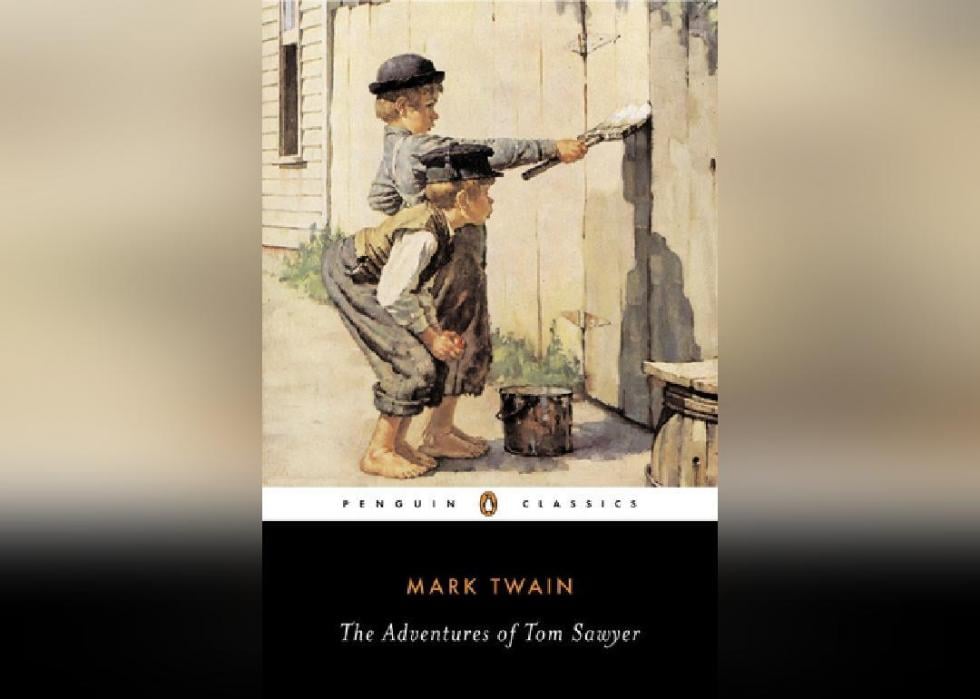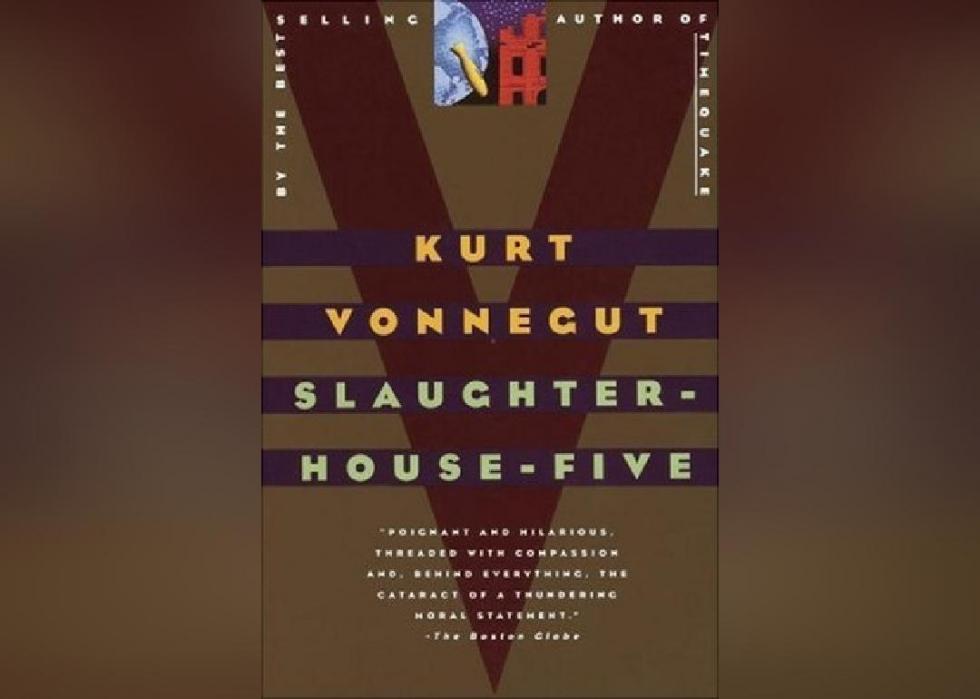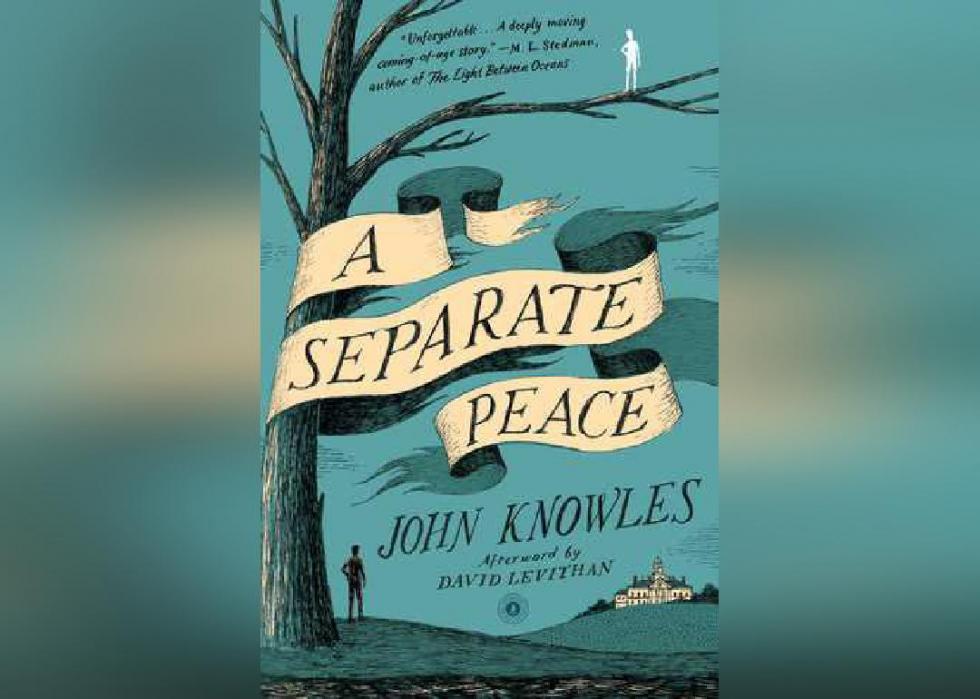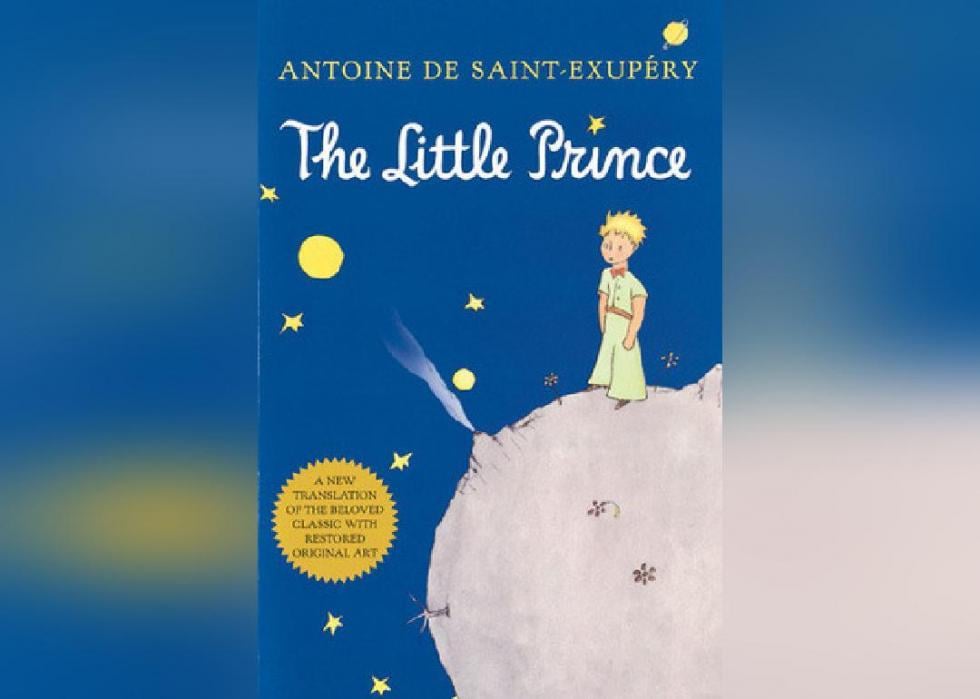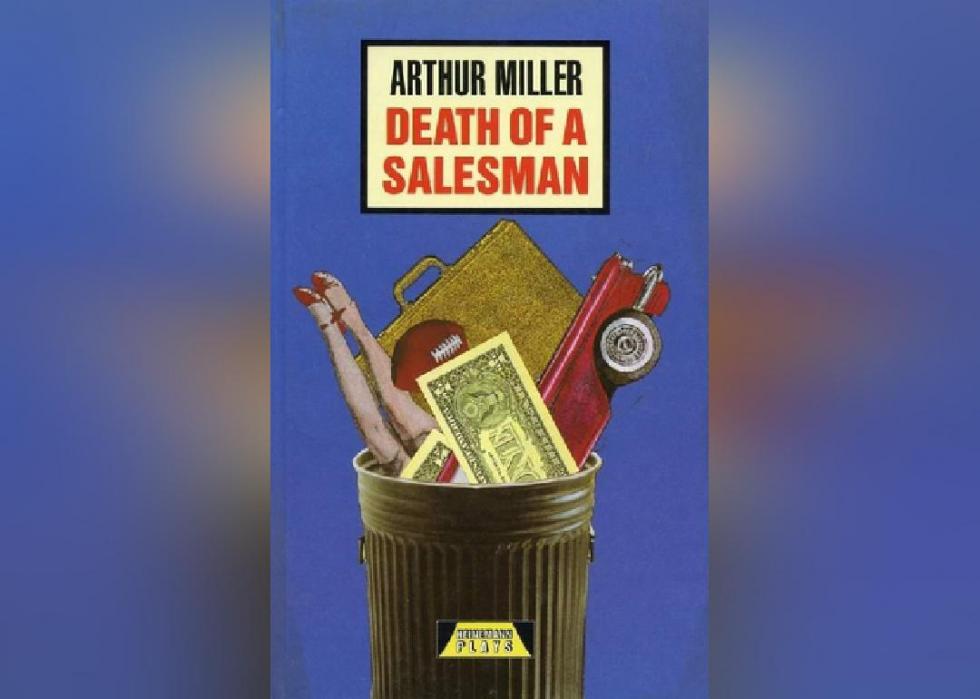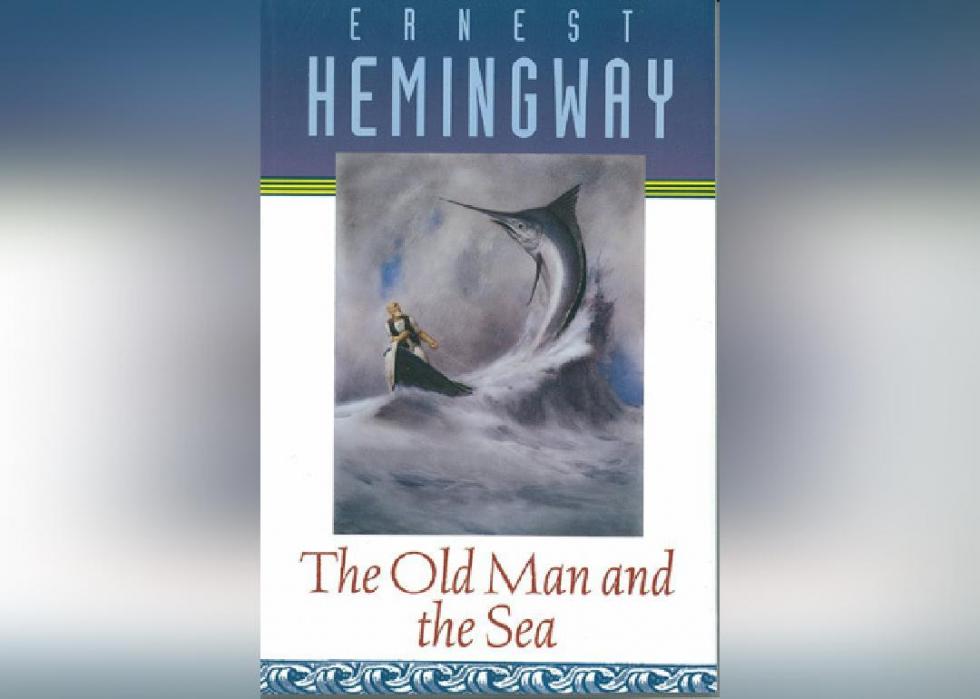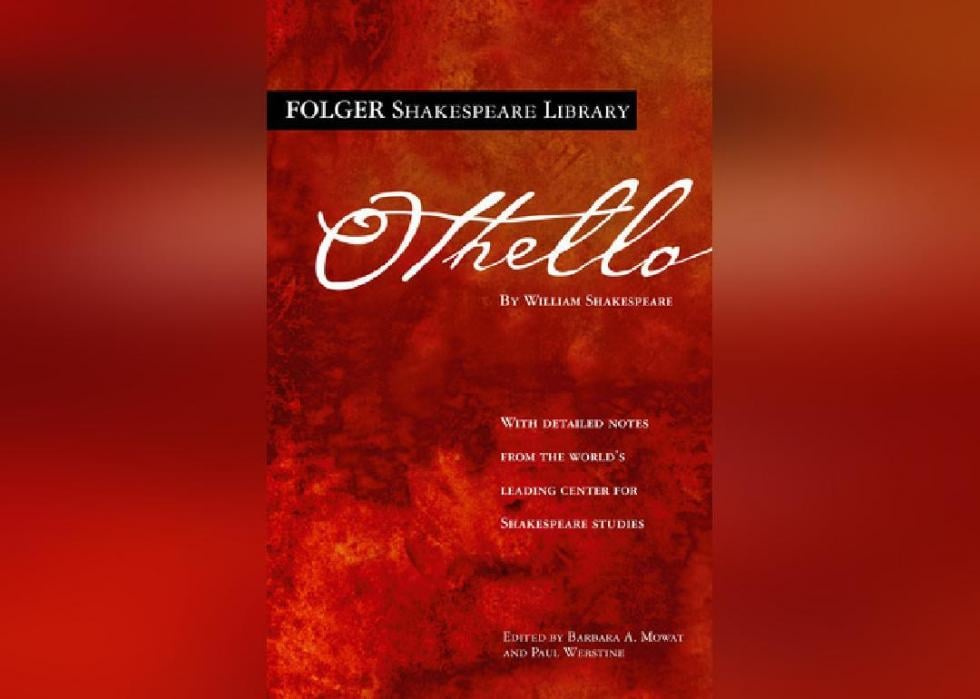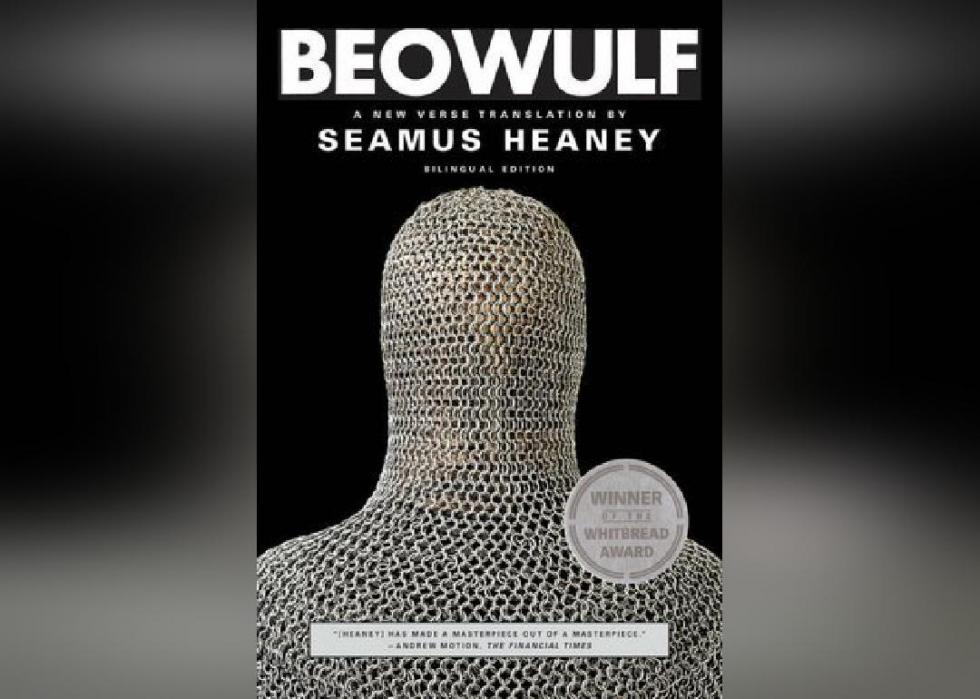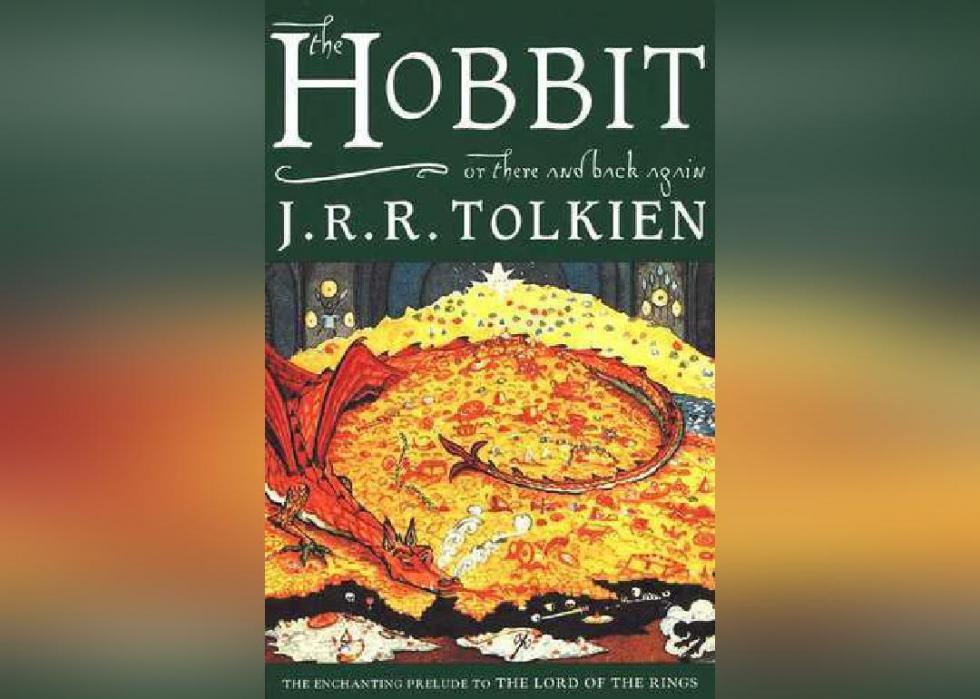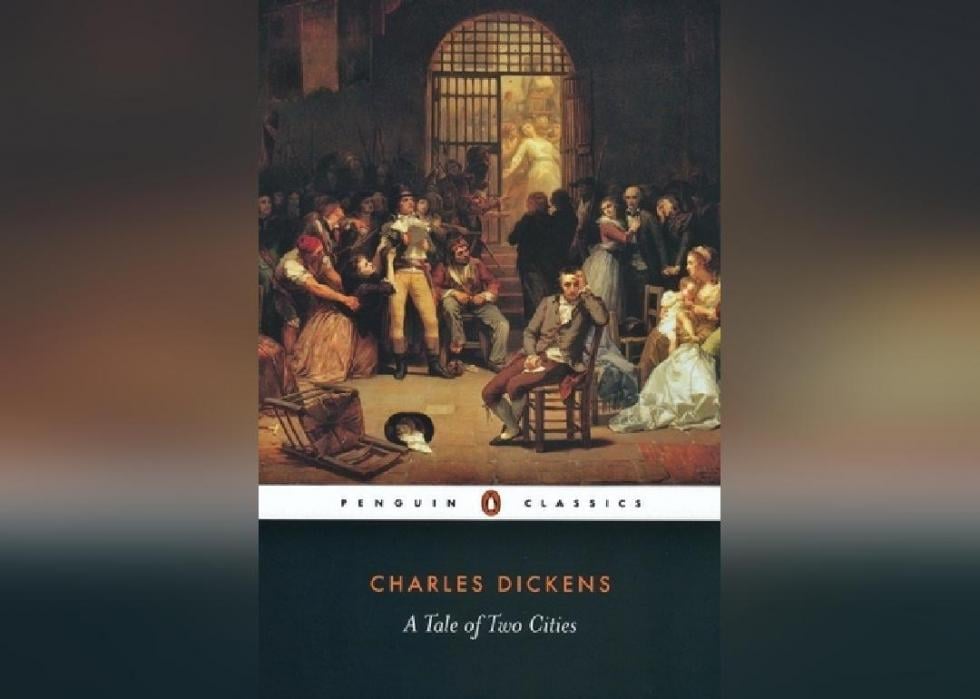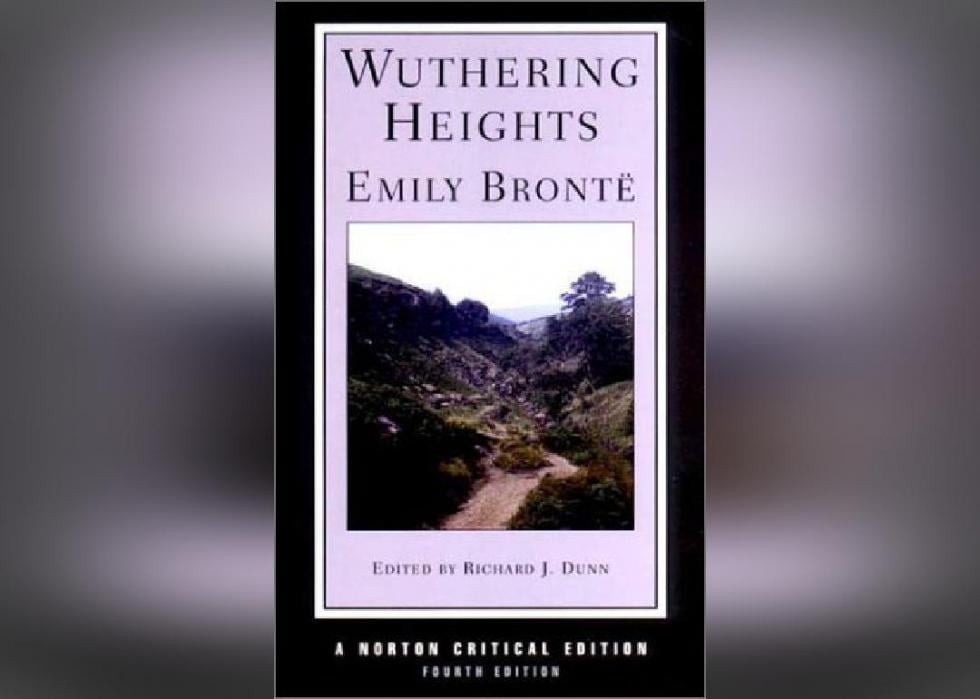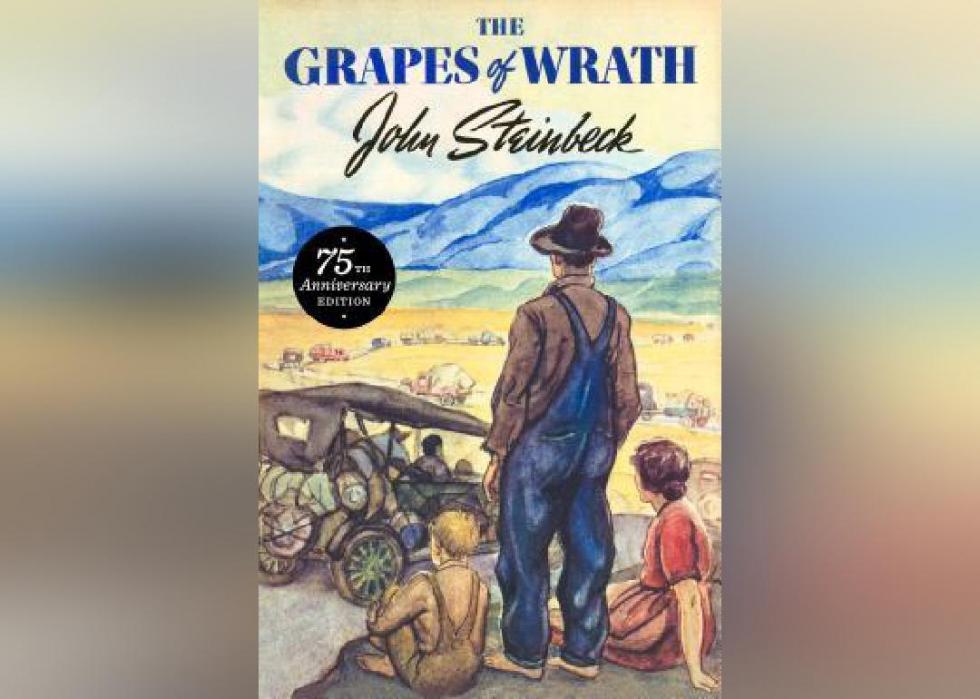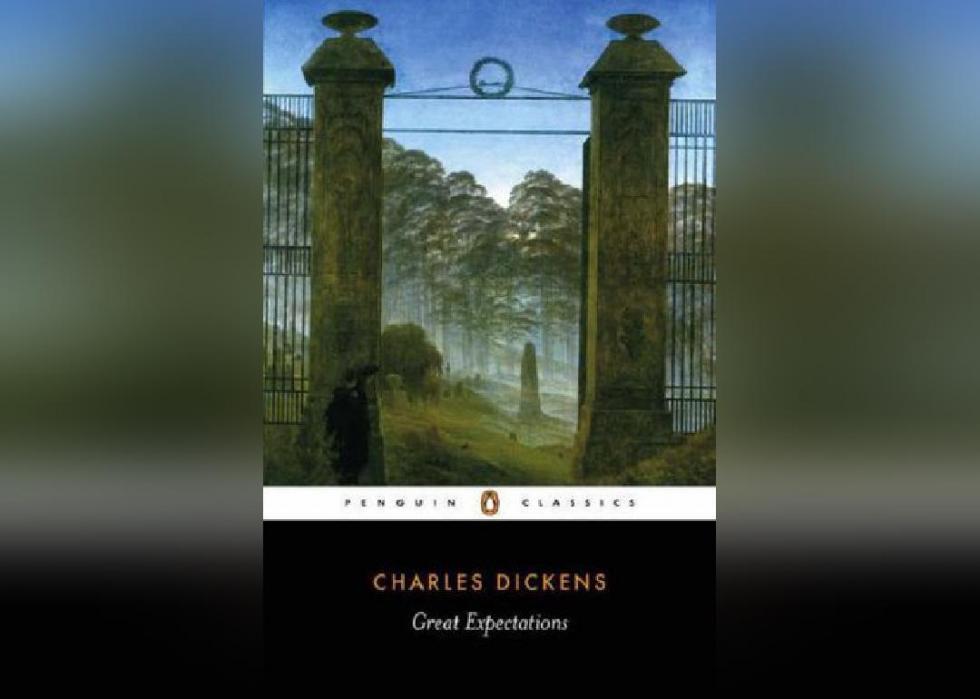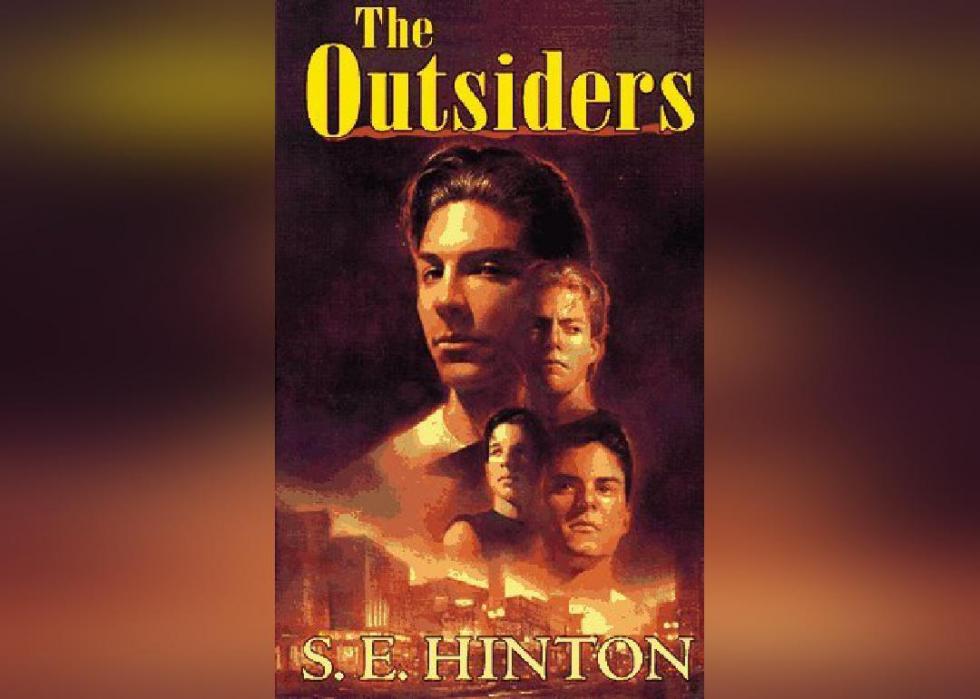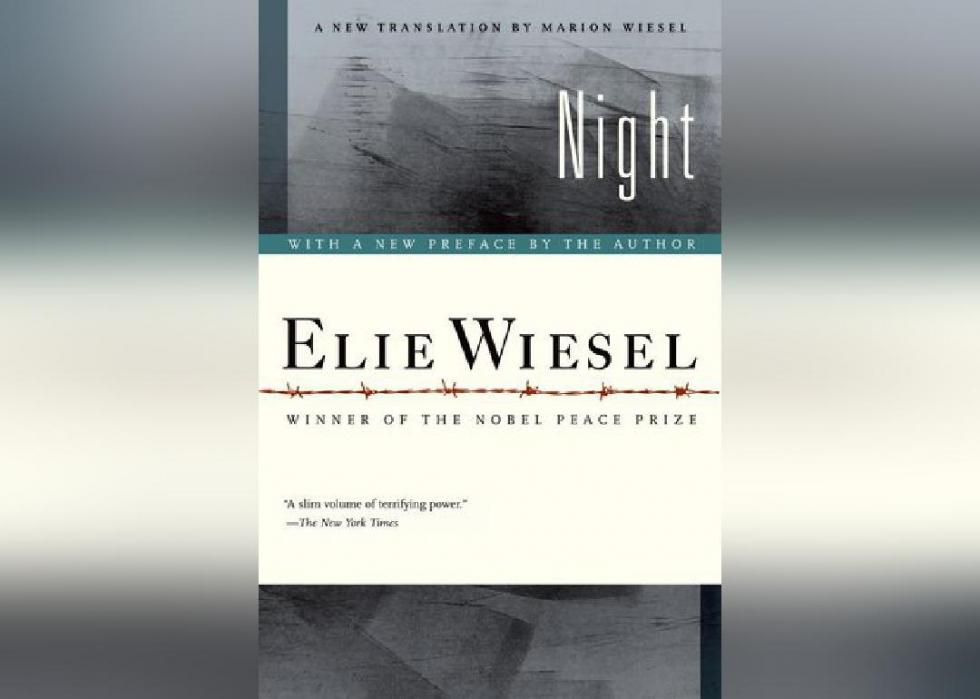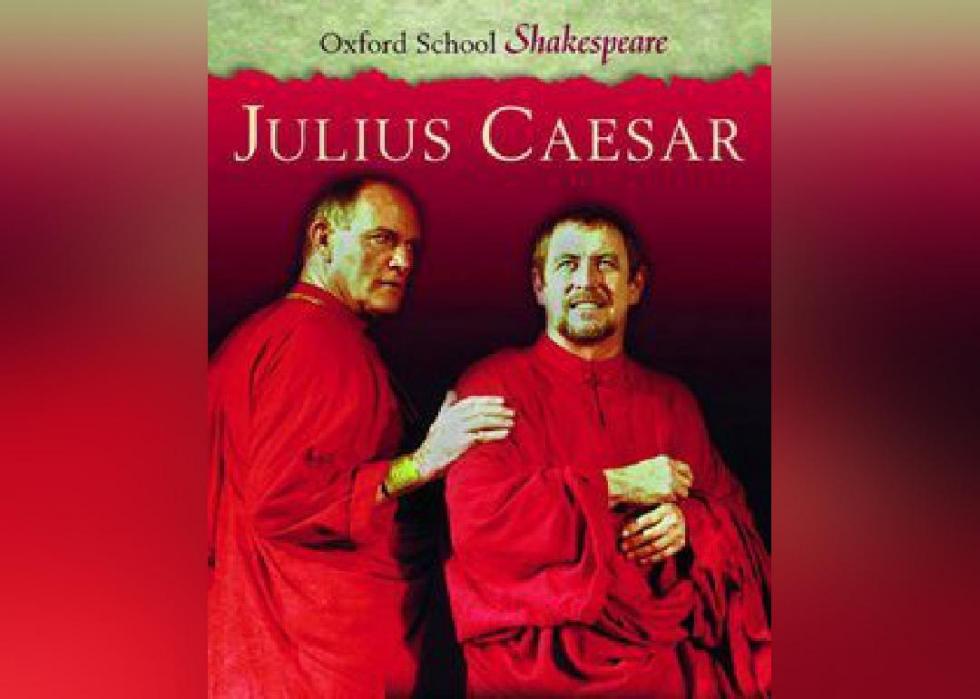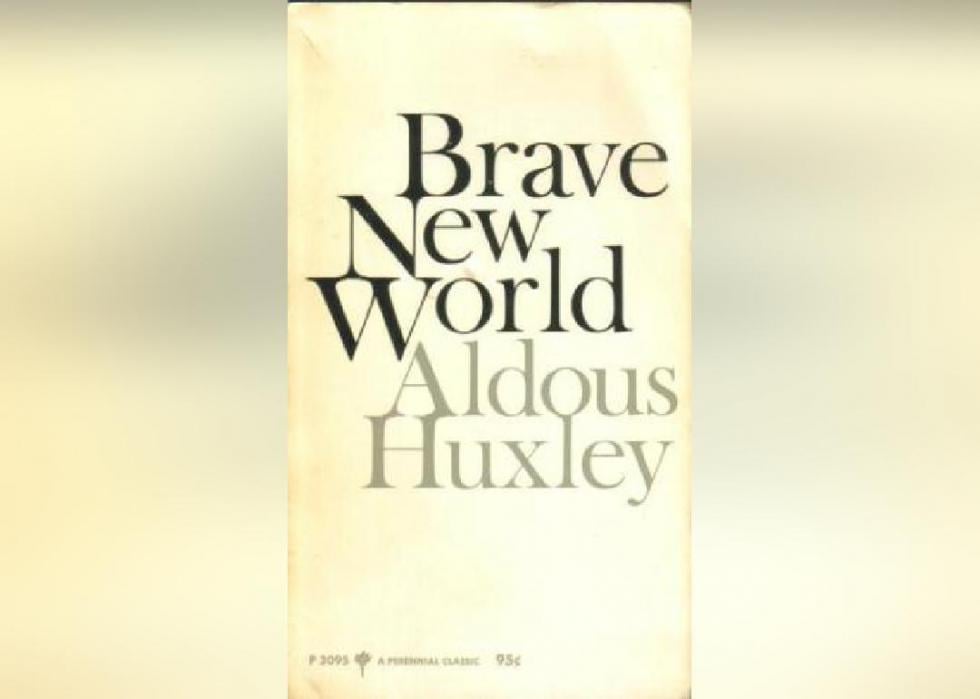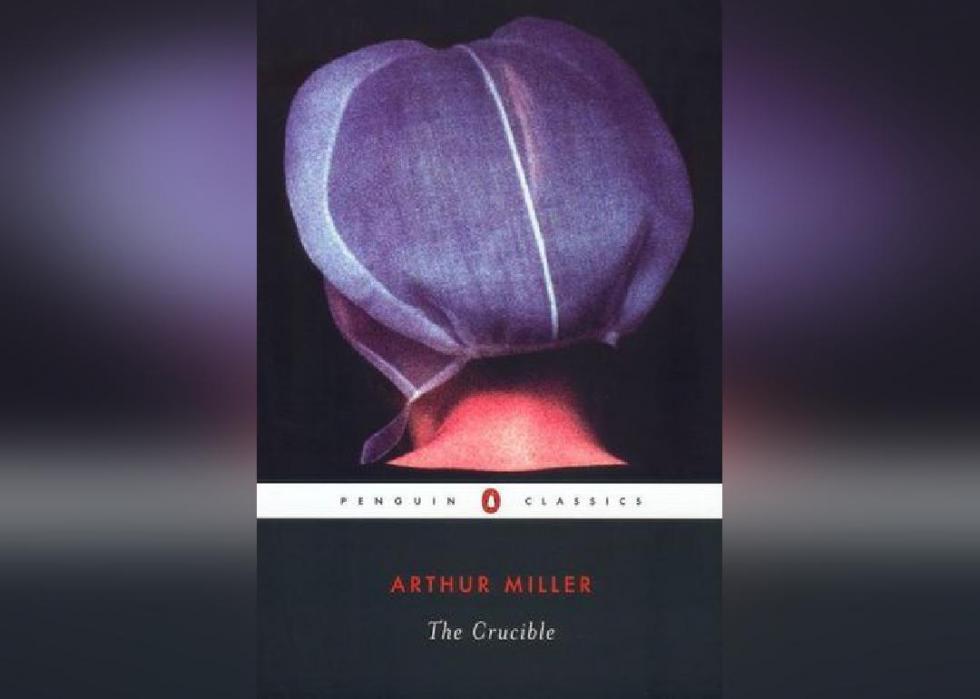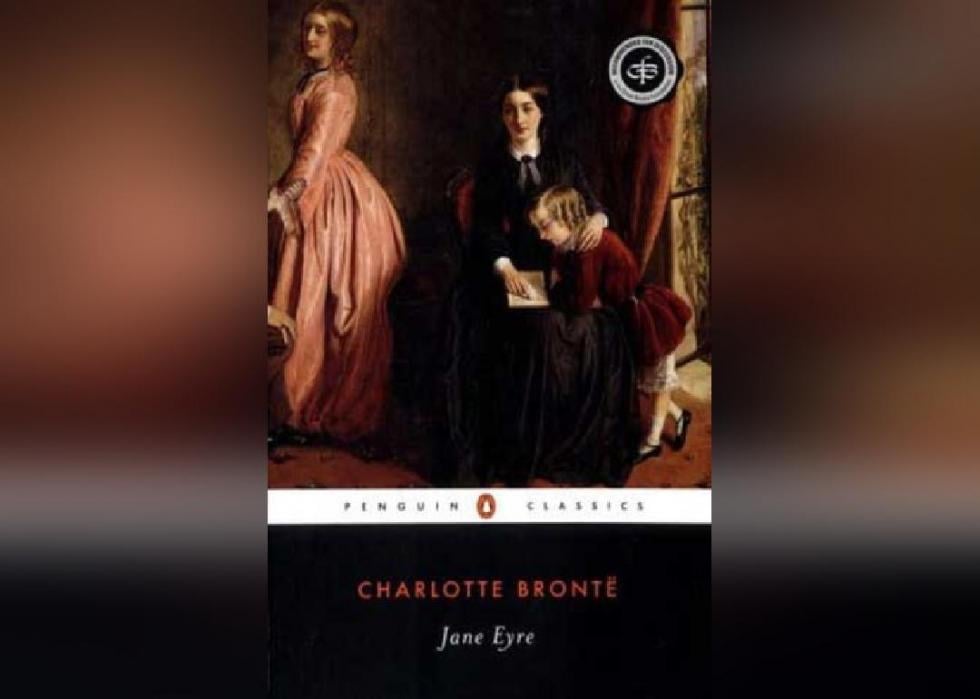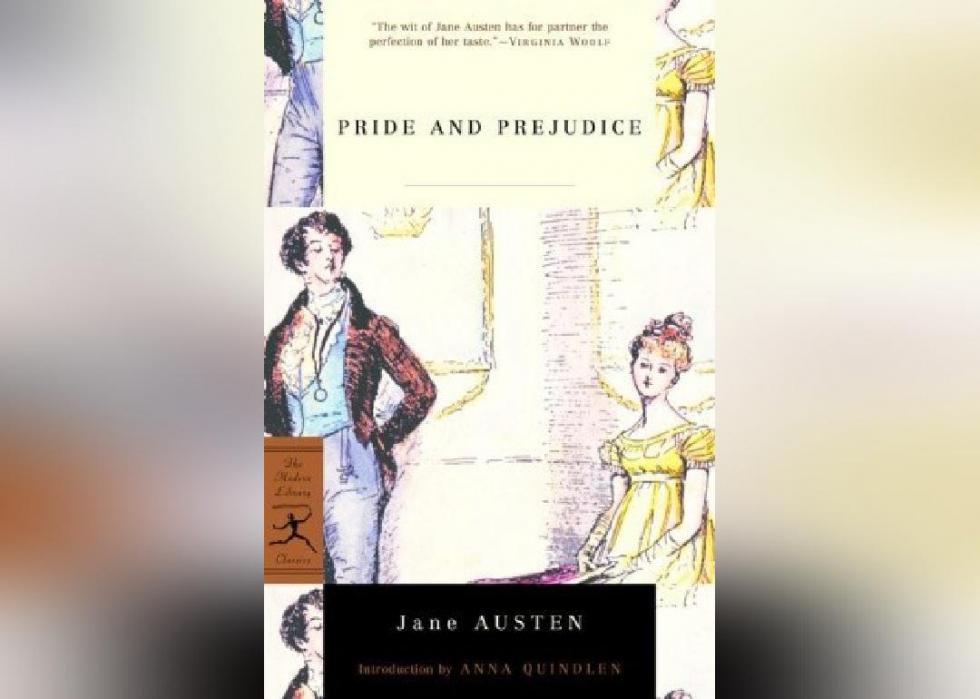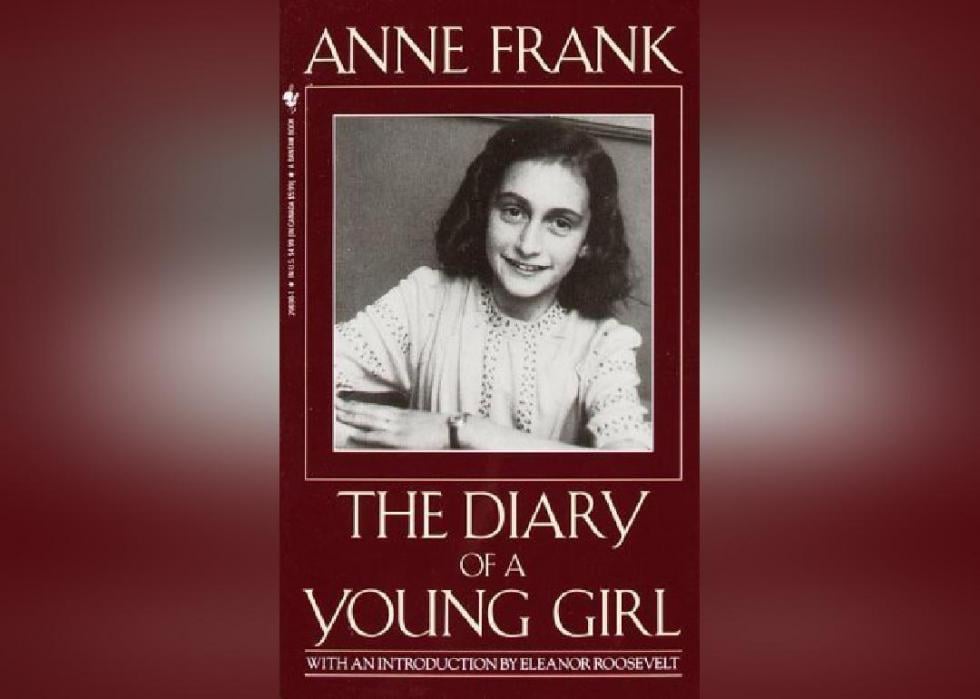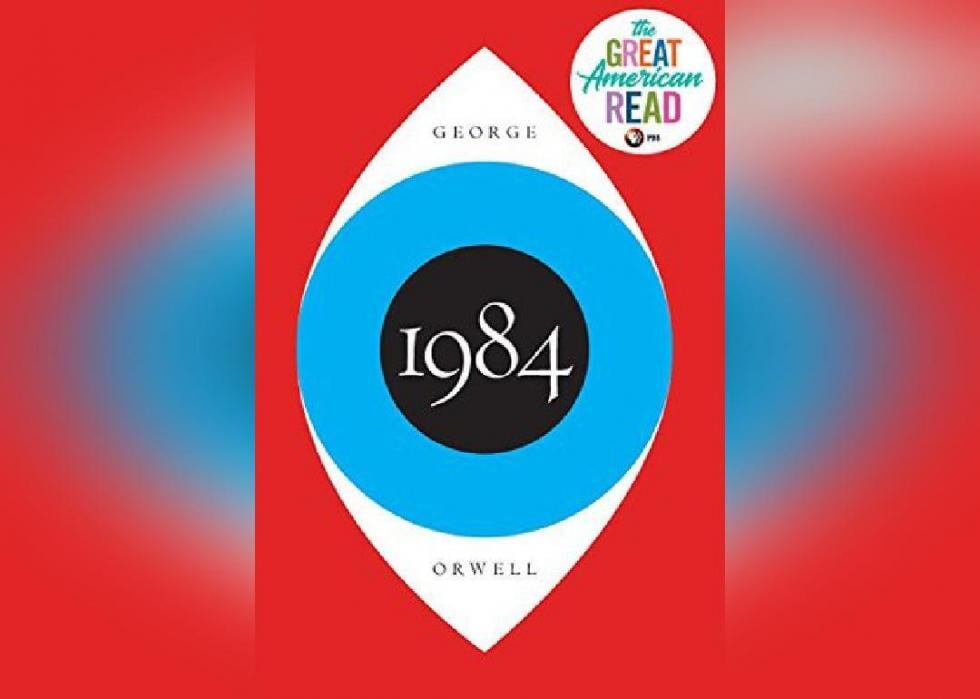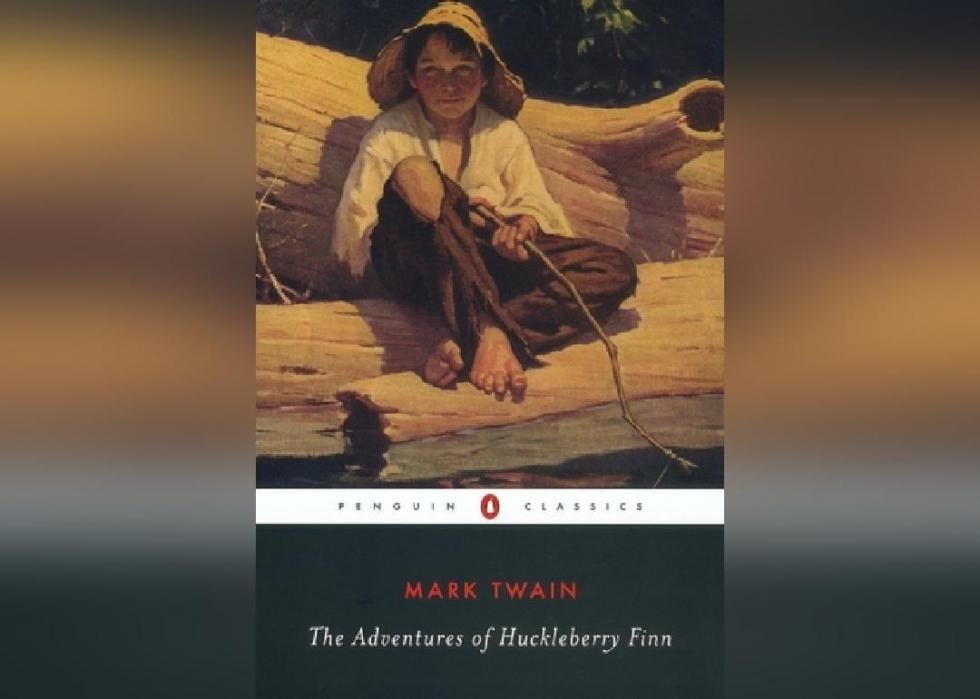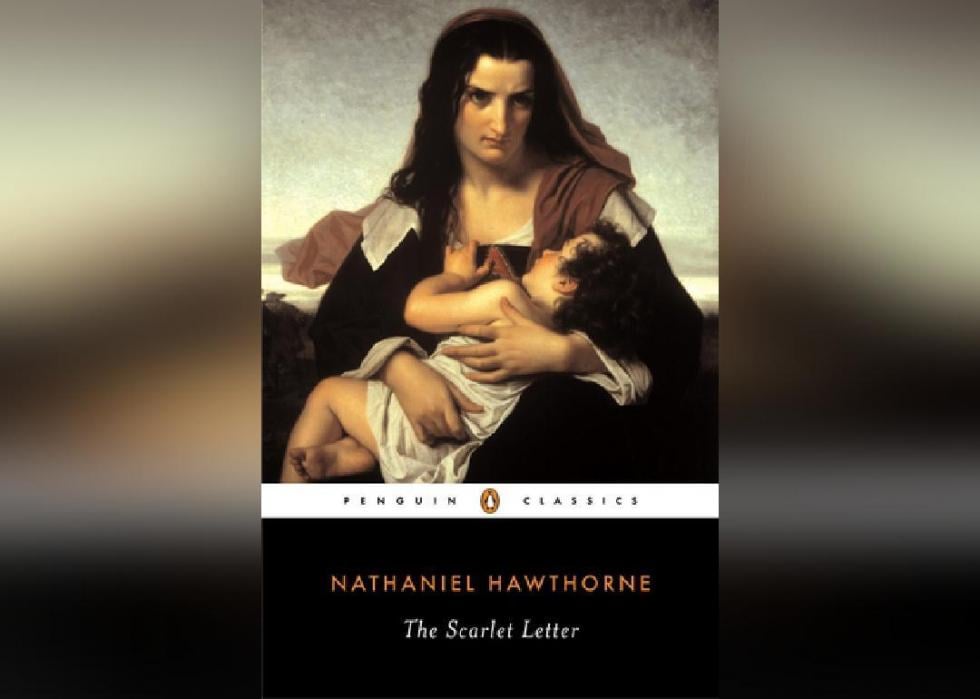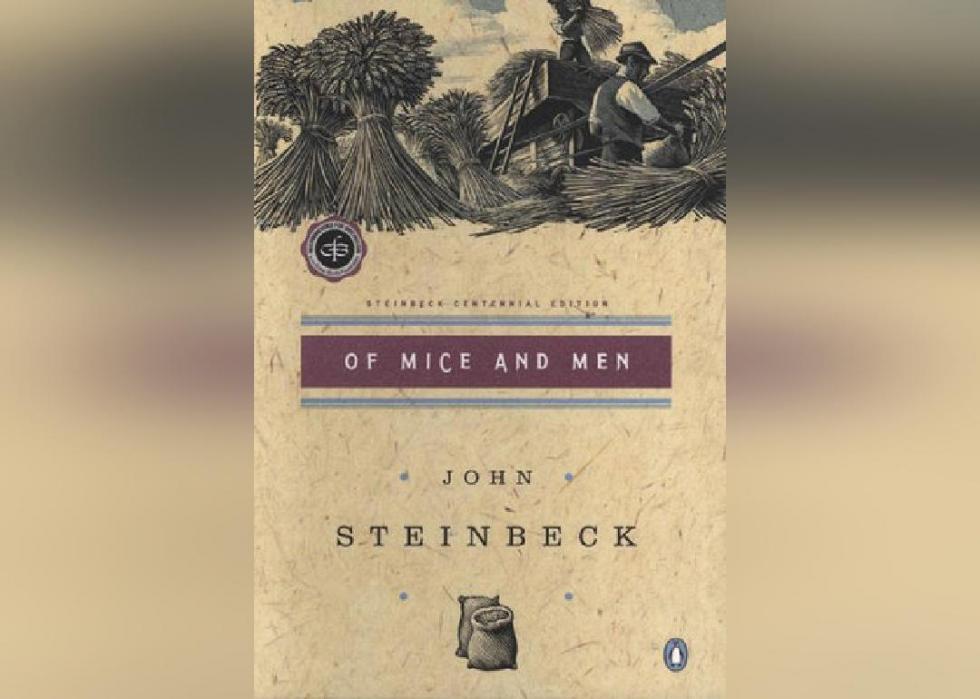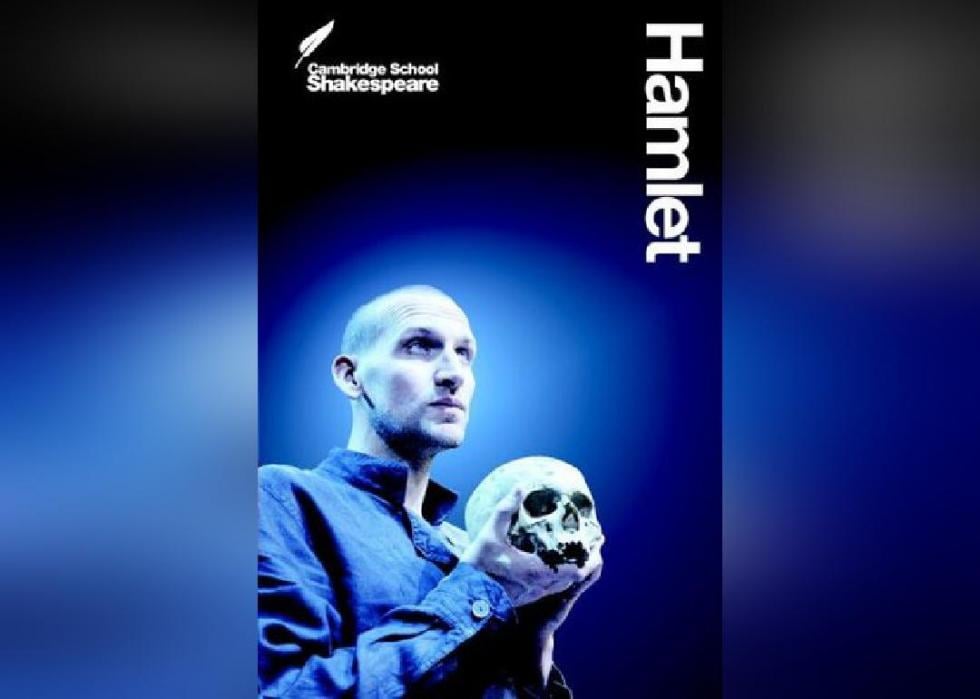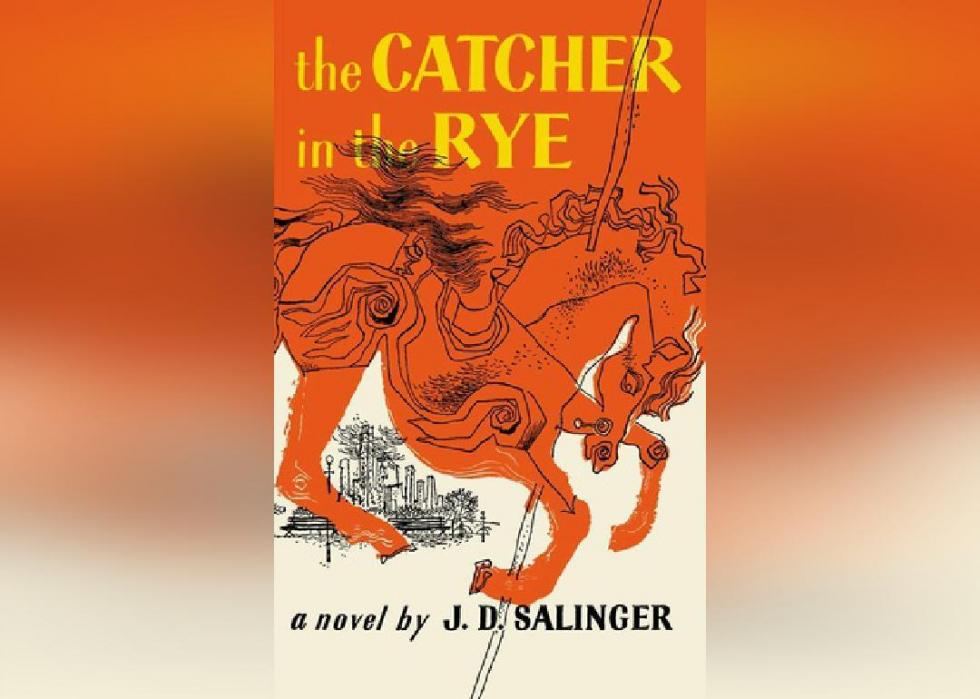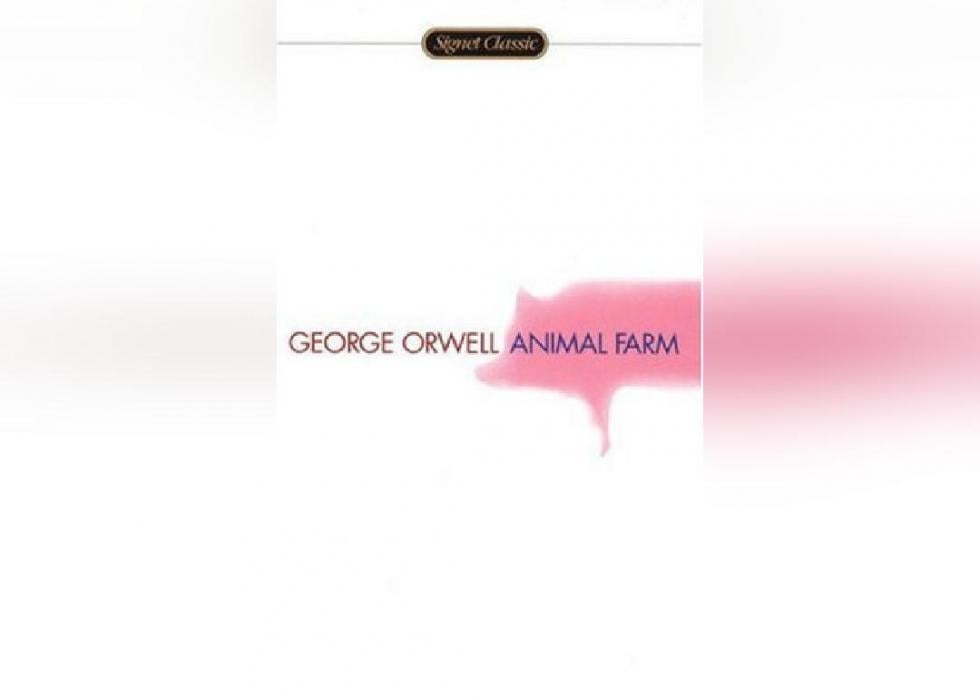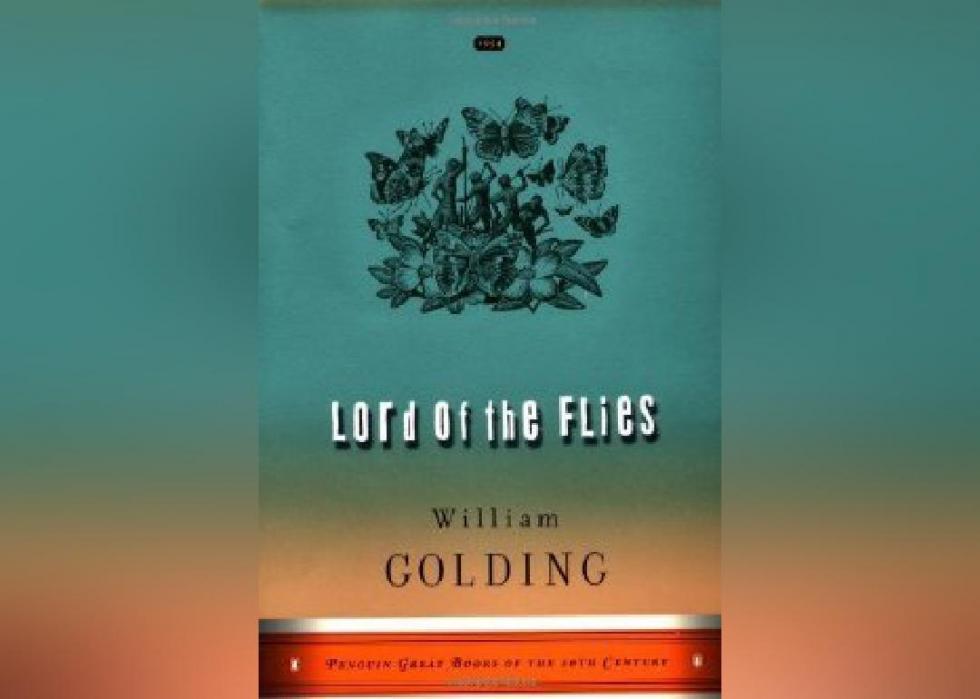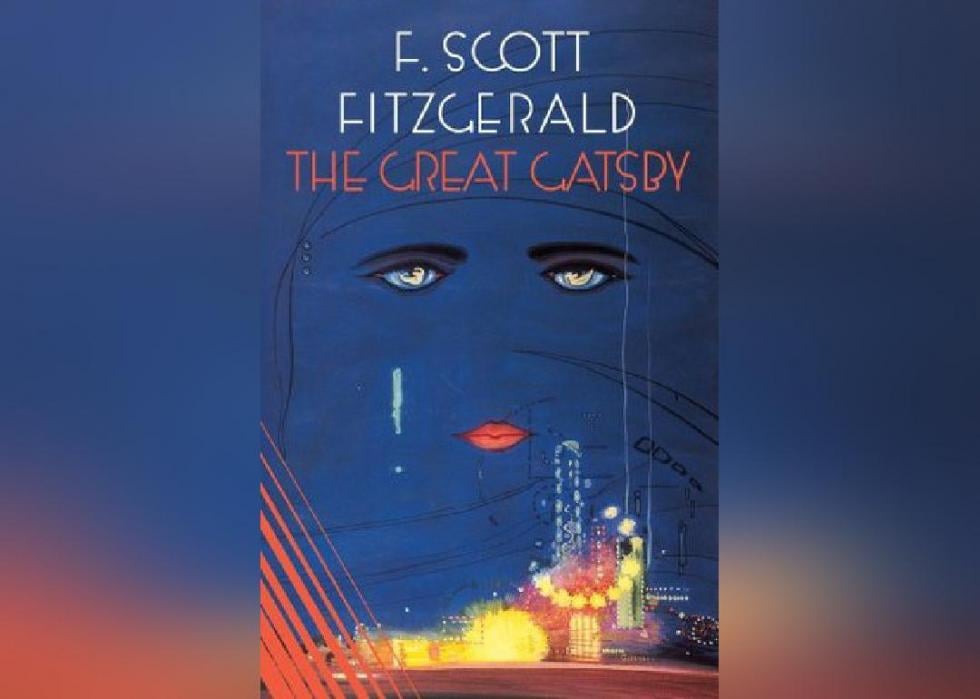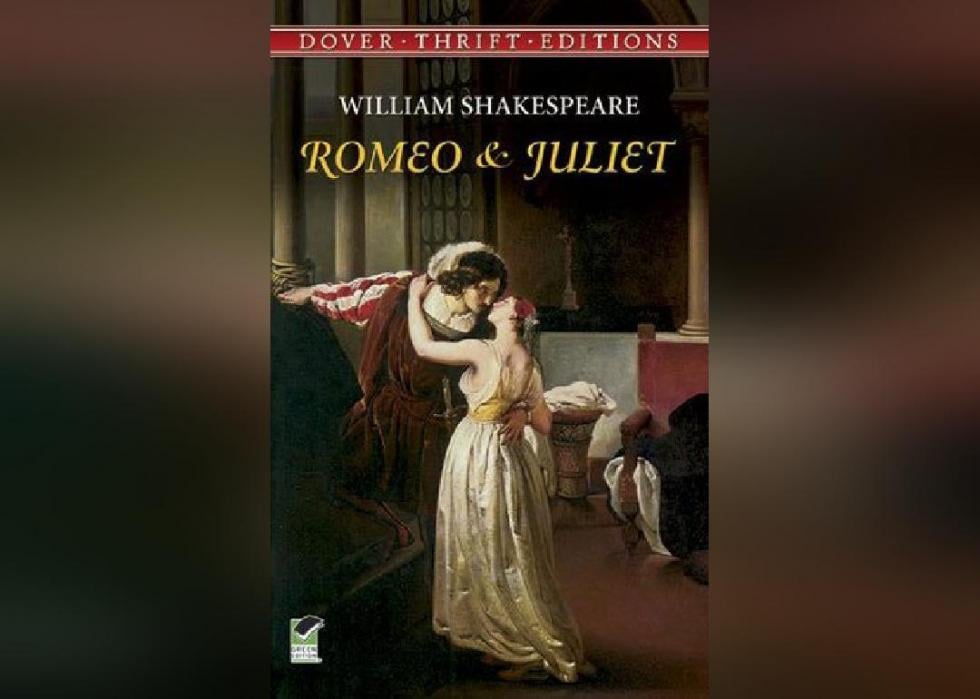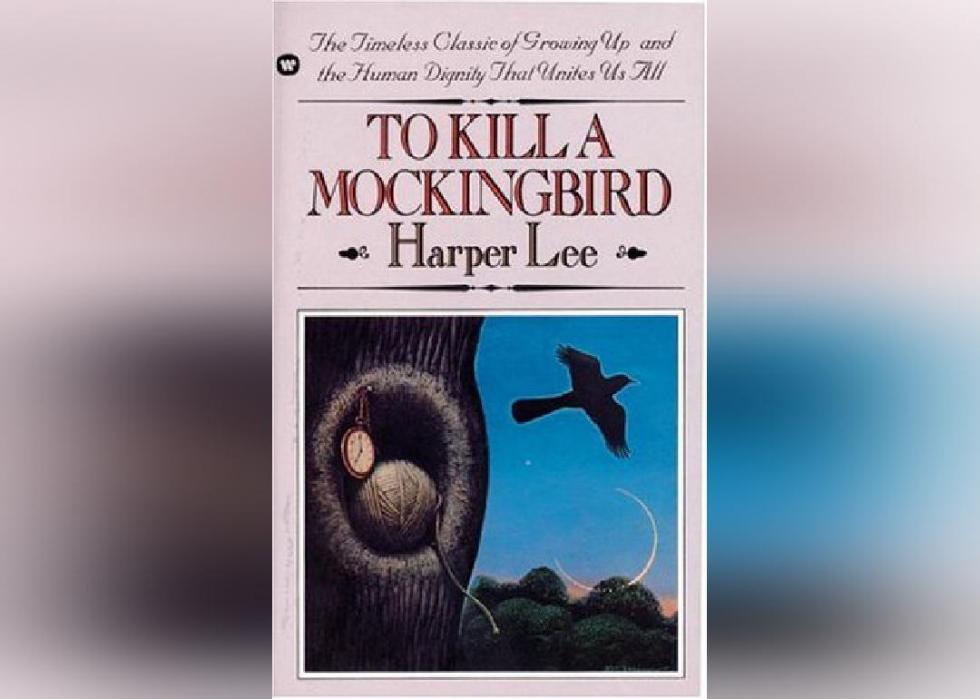Research shows that reading fiction encourages empathy. While more high school curriculums should include modern, diverse writers like Amy Tan and Malala Yousafzai, certain classics—like John Steinbeck's "The Grapes of Wrath" and Sandra Cisneros's "The House on Mango Street"—endure. George Orwell's "1984," a novel published in 1949 about a dystopian future where the government controls the truth, even surged to the Amazon best-sellers list in 2017, shortly after former President Trump's advisor Kellyanne Conway described falsehoods as "alternative facts."
Sometimes parents, teachers and school-board officials disagree on what kids should or shouldn't read in high school. In 2018, "To Kill a Mockingbird" and "The Adventures of Huckleberry Finn" were dropped in a Minnesota school district because they contain racial slurs. Kurt Vonnegut's "Slaughterhouse-Five," a book about an American soldier doomed to repeat history, has been controversial for decades. In 2011, a Missouri High School pulled it from library shelves after complaints it was anti-American.
Certain books deserve a first, second, or maybe even a third read. Using data from Goodreads, Stacker compiled a list of 50 timeless books, plays, and epic poems commonly found on high school reading lists. A total of 1,002 voters picked the most essential reading required for students. The final ranking takes into account how many times each book was voted on and how highly voters ranked them. Read on to see which classics made the list.
#50. Their Eyes Were Watching God
- Author: Zora Neale Hurston
- Score: 3,540
- Average rating: 3.90/5, based on 232,956 ratings
A coming-of-age tome set in early 1900s Florida, "Their Eyes Were Watching God" tackles a multitude of issues: racism, sexism, segregation, poverty, and gender roles. Initially overlooked upon its release, Hurston's best-known work is now considered a modern-American masterpiece, thanks to work done in Black studies programs in the 1970s.
#49. A Raisin in the Sun
- Author: Lorraine Hansberry
- Score: 3,550
- Average rating: 3.76/5, based on 59,314 ratings
The story follows the Youngers, a working-class Black family living on the South Side of Chicago who move to an all-white neighbourhood during a time of desegregation. In 1959, Lorraine Hansberry became the first Black playwright to get a play produced on Broadway. The title of the play comes from "Dream Deferred," a poem by Langston Hughes.
#48. Moby-Dick; or, the Whale
- Author: Herman Melville
- Score: 3,750
- Average rating: 3.49/5, based on 445,669 ratings
Herman Melville uses the narrative of a sailor, Ishmael. He is on board with Captain Ahab who is trying to exact revenge against Moby Dick, the white whale that bit off his leg at the knee. For those who didn't study the tale in high school—or couldn't make it through the 135 chapters—critics say it really is worth a read. Some refer to it as the American Bible, better approached after becoming an adult and not as a student in high school.
#47. The Pearl
- Author: John Steinbeck
- Score: 3,821
- Average rating: 3.45/5, based on 171,505 ratings
John Steinbeck's "The Pearl" tells the story of Kino, a poor diver who is trying to support his family by gathering pearls from gulf beds. He is only barely scraping by until he happens upon a giant pearl. Kino thinks this discovery will finally provide him with the financial comfort and security he has been seeking, but it ultimately brings disaster. The story addresses the reader's relationship to nature, the human need for connection, and the consequences of resisting injustice.
#46. The Importance of Being Earnest
- Author: Oscar Wilde
- Score: 3,825
- Average rating: 4.17/5, based on 277,734 ratings
This comedic play by Oscar Wilde takes a satiric look at Victorian social values while following two men—Jack Worthing and Algernon Moncrieff—as they tell lies to bring some excitement to their lives. "The Importance of Being Earnest" was Wilde's final play, and some consider it his masterpiece.
#45. The Red Badge of Courage
- Author: Stephen Crane
- Score: 3,838
- Average rating: 3.23/5, based on 82,944 ratings
In "The Red Badge of Courage," Henry Fleming enlists in the Union Army, enticed by visions of glory. When the reality of war and battle set in, Fleming retreats in fear. In the end, he faces his cowardice and rises to leadership. This American war novel was published in 1895 and is so authentic that it's easy to believe the author—who was born after the Civil War ended—was himself a veteran.
#44. Mythology: Timeless Tales of Gods and Heroes
- Author: Edith Hamilton
- Score: 3,902
- Average rating: 3.99/5, based on 40,876 ratings
Author Edith Hamilton takes the reader on a journey through Greek, Roman, and Norse mythology with tales of the Olympus and Norse gods in Valhalla and the Trojan War in Odysseus. For high school students, it can serve as an important introduction to classic mythology that can help them better understand the themes behind other works like "The Iliad" and "The Odyssey." Hamilton's book is considered the standard by which all other books on mythology are measured.
#43. I Know Why the Caged Bird Sings
- Author: Maya Angelou
- Score: 3,971
- Average rating: 4.22/5, based on 351,852 ratings
Maya Angelou, who was raped by her mother's boyfriend when she was 8, writes about her experience with sexual assault and racism while growing up in the Jim Crow South in "I Know Why the Caged Bird Sings." The autobiography, which Angelou wrote at the urging of her friend and fellow writer James Baldwin, was one of the first written by a Black woman to reach a wide general audience.
#42. The Adventures of Tom Sawyer
- Author: Mark Twain
- Score: 4,073
- Average rating: 3.91/5, based on 686,551 ratings
"The Adventures of Tom Sawyer" takes place in the fictional town of St. Petersburg, Missouri, during the 1840s. Tom Sawyer and his friend Huck Finn witness a murder by Joe. After the boys stay silent, the wrong man is accused of the crime. When they flee, the whole town presumes them dead and the boys end up attending their own funerals. Mark Twain's portrayal of Sawyer and Finn challenge the idyllic American view of childhood, instead showing children as fallible human beings with imperfections like anyone else.
#41. Slaughterhouse-Five
- Author: Kurt Vonnegut
- Score: 4,357
- Average rating: 4.07/5, based on 1,025,939 ratings
In "Slaughterhouse-Five," Kurt Vonnegut tells the story of Billy Pilgrim—based on a real American soldier—who is "unstuck in time." He travels throughout the timeline of his life in a nonlinear fashion, forced to relive certain moments. He is first pulled out after he is drafted and is captured in Germany during World War II. The book, which explores how humankind repeats history, has been banned or challenged in classrooms throughout the United States. It even landed in the U.S. Supreme Court in 1982 in Board of Education v. Pico, and the court held that banning the book violated the First Amendment.
#40. The Taming of the Shrew
- Author: William Shakespeare
- Score: 4,666
- Average rating: 3.80/5, based on 145,421 ratings
This five-act comedy tells the story of the courtship of the headstrong Katharine and the money-grubbing Petruchio, who is determined to subdue Katharine and make her his wife. After the wedding, Petruchio drags his new wife through the mud to their new home in the country. He proceeds to starve and deprive her of sleep to make his new bride submissive. The play, one of Shakespeare's most popular, has been both criticized for its abusive and misogynistic attitude toward women, and praised as a challenging view of how women are supposed to behave.
#39. A Separate Peace
- Author: John Knowles
- Score: 4,859
- Average rating: 3.57/5, based on 179,467 ratings
In "A Separate Peace," John Knowles explores the friendship of two young men—the quiet, intellectual Gene Forrester and his extroverted, athletic friend Finny. Gene lives vicariously through Finny, but his jealousy ultimately ends in tragedy after he commits a subtle act of violence. The book examines themes of envy and the need to achieve.
#38. The Little Prince
- Author: Antoine de Saint-Exupéry
- Score: 5,234
- Average rating: 4.30/5, based on 1,120,033 ratings
In "The Little Prince," a pilot whose plane has crashed in the Sahara desert meets a young boy from outer space. The boy is travelling from planet to planet in search of friendship. On the boy's home—an asteroid—he lived alone, accompanied only by a solitary rose. Once on Earth, the boy meets a wise fox who tells him he can only see clearly with his heart. The book's somber themes of imagination and adulthood have resonated with children and adults alike since it published—it is now one of the most-translated books of all time.
#37. Crime and Punishment
- Author: Fyodor Dostoyevsky
- Score: 5,245
- Average rating: 4.20/5, based on 543,309 ratings
This Russian classic, published in 1886, tells the story of a former student named Rodion Raskolnikov who is now impoverished and on the verge of mental instability. To get money—and to demonstrate his exceptionalness to himself—he comes up with a murderous plan to kill a pawnbroker. Considered one of the first psychological novels, the plot is also a political one that explores the character's pull toward liberal views and his rebellion against them.
#36. Death of a Salesman
- Author: Arthur Miller
- Score: 5,567
- Average rating: 3.50/5, based on 165,933 ratings
Arthur Miller introduces readers to an aging Willy Loman, a travelling salesman nearing the end of his career. Loman decides he's tired of driving for work and asks for an office job in New York City, believing he is vital to the company. His boss ends up firing him. Loman is also faced with the fact that his son, Biff, has not turned into the success Loman had hoped for. In the end, Loman commits suicide so his son can have the insurance money to jumpstart a better life. After his death, only Loman's family attends his funeral. "Death of a Salesman" won the 1949 Pulitzer Prize in Drama.
#35. The Old Man and the Sea
- Author: Ernest Hemingway
- Score: 5,822
- Average rating: 3.76/5, based on 715,980 ratings
"The Old Man and the Sea" was Ernest Hemingway's final major work. The story follows an old man who catches a large fish, only to have it eaten by sharks before he can get it back to shore. Although many may see symbolism about life and aging in the book, Hemingway said there wasn't a deeper meaning in the prose.
#34. Flowers for Algernon
- Author: Daniel Keyes
- Score: 5,827
- Average rating: 4.11/5, based on 422,243 ratings
The main character in "Flowers for Algernon" is Charlie Gordon, a man of low intelligence who becomes a genius after undergoing an experimental procedure. The experiment has already been performed on a lab mouse named Algernon. Gordon's intelligence opens his eyes to things he's never understood before, but he eventually loses his newly acquired knowledge. The mouse, who Gordon remembers fondly, dies. Daniel Keyes wrote the book after realizing that his education was causing a rift between him and his loved ones, making him wonder what it would be like if someone's intelligence could be increased.
#33. Othello
- Author: William Shakespeare
- Score: 5,992
- Average rating: 3.89/5, based on 286,333 ratings
Shakespeare wrote "Othello" in the early 17th century. The play tells the tragic story of Othello—a Moor and general in the Venetian army, and Iago—a traitorous low-ranking officer. Shakespeare tackles themes of racism, betrayal, and jealousy. While he refers to Othello as "Black," Shakespeare most likely meant he was darker-skinned than most Englishmen at the time and not necessarily of African descent.
#32. The Canterbury Tales
- Author: Geoffrey Chaucer
- Score: 6,040
- Average rating: 3.49/5, based on 175,388 ratings
"The Canterbury Tales," written by Geoffrey Chaucer in the 14th century, was one of the first major works of English literature. The story follows a group of pilgrims who tell tales during their journey from London to Canterbury Cathedral. The cast of characters—including a carpenter, cook, and knight, among others—paint a varied picture of 14th-century society. The stories inspired the modern film "A Knight's Tale," starring Heath Ledger as a poor knight, and Paul Bettany as Chaucer.
#31. Beowulf
- Author: Unknown
- Score: 6,572
- Average rating: 3.43/5, based on 209,182 ratings
"Beowulf" is an epic poem—an original manuscript copy is housed in the British Library—of 3,000 lines. It was written in Old English somewhere between 700 and 1000 A.D., and tells the story of Beowulf, a nobleman, and warrior in Sweden who is sent to Denmark to fight a swamp monster called Grendel.
#30. The Hobbit
- Author: J. R. R. Tolkien
- Score: 6,701
- Average rating: 4.27/5, based on 2,554,239 ratings
In this prequel to The Lord of the Rings trilogy, readers tag along with Bilbo Baggins, an unassuming hobbit who is convinced to go on an adventure by the wizard Gandalf. Bilbo finds there is much more to himself than he thought—and he finds a certain ring, too. "The Hobbit," written in 1932, contains many of the building blocks—an epic quest, an unwilling hero, elves, and goblins—that modern fantasy writers still reference today.
#29. A Tale of Two Cities
- Author: Charles Dickens
- Score: 7,077
- Average rating: 3.83/5, based on 750,394 ratings
"A Tale of Two Cities," famously starts out: "It was the best of times, it was the worst of times..." Set in the late 1700s, Charles Dickens vividly writes about the time leading up to and during the French Revolution. The historical novel describes death and despair, but also touches on themes of redemption.
#28. Wuthering Heights
- Author: Emily Brontë
- Score: 7,222
- Average rating: 3.84/5, based on 1,183,188 ratings
"Wuthering Heights," published in 1847, was the first and only novel by Emily Brontë, who died a year later at the age of 30. Brontë tells the tragic love story between Heathcliff, an orphan, and Catherine, the daughter of his wealthy benefactor. Considered a classic in English literature, the novel shows readers how passionate and destructive love can be.
#27. The Grapes of Wrath
- Author: John Steinbeck
- Score: 7,540
- Average rating: 3.95/5, based on 666,190 ratings
"The Grapes of Wrath" is considered a great American novel partly because it brought to light the destruction and despair caused by the Dust Bowl and the Great Depression. The story follows Tom Joad after he is released from prison to find his family's Oklahoma farmstead empty and destroyed. Joad and his family later set off for a new life in California, only to face struggles along the way. The book, which focuses on the theme of hard work, won the 1940 Pulitzer Prize for Novel (now Fiction).
#26. Frankenstein
- Author: Mary Wollstonecraft Shelley
- Score: 7,931
- Average rating: 3.78/5, based on 1,032,148 ratings
Mary Shelley wrote "Frankenstein," considered the formative horror text and one of the greatest horror novels of all time, when she was only 19. The story was published in 1818 and introduced readers to Dr. Victor Frankenstein, a scientist who brings to life a creature he assembled from discarded corpse parts. Although Dr. Frankenstein is horrified by his creation and abandons it, the creature manages to educate itself and then seeks revenge on his creator. The novel explores humanity's desire for innovation and the fear of change it brings.
#25. A Midsummer Night's Dream
- Author: William Shakespeare
- Score: 7,999
- Average rating: 3.94/5, based on 409,141 ratings
Like many of Shakespeare's plays, "A Midsummer Night's Dream" explores the theme of love. This comedy shows the events that surround the marriage of Theseus, the duke of Athens, to Hippolytus, a former Amazon queen. The play also shares the stories of several other lovers who are influenced by the fairies who live in the forest near the wedding. The play is a favorite for actors and audiences, even today.
#24. Great Expectations
- Author: Charles Dickens
- Score: 8,479
- Average rating: 3.77/5, based on 590,620 ratings
This Charles Dickens classic tells the story of Pip, an orphan who gets a chance at a better life through an anonymous benefactor. The plot mostly centres around Pip's regular visits to Miss Havisham, a wealthy recluse, and his love for her adopted daughter Estella, who is cold toward Pip until years later. Many consider the novel a great masterpiece.
#23. The Outsiders
- Author: S.E. Hinton (Goodreads Author)
- Score: 8,480
- Average rating: 4.08/5, based on 816,572 ratings
S.E. Hinton introduced readers to 14-year-old Ponyboy Curtis in "The Outsiders," a novel she wrote when she was 15. The plot centres around two rival gangs: the lower-class Greasers and the well-off Socials. It touches on themes of teen angst, including the frustrations young people have when they can't rely on adults to change things, while also not knowing how to fix things themselves. Hinton's publishers encouraged her to publish under her initials because they didn't think the public would respect a book about teenage boys by someone with a feminine name.
#22. Night
- Author: Elie Wiesel
- Score: 9,166
- Average rating: 4.32/5, based on 868,121 ratings
Elie Wiesel gives a first-hand account of the atrocities experienced in German concentration camps during World War II. Wiesel and his family were deported to Auschwitz. His mother, father, and younger sister all died. In "Night," Wiesel's vivid and horrific descriptions of beatings, starving men, and death shine a chilling, personal light on the tragedy of the Holocaust.
#21. Julius Caesar
- Author: William Shakespeare
- Score: 9,413
- Average rating: 3.67/5, based on 153,978 ratings
Shakespeare takes on history with "Julius Caesar," a tragic story of power and betrayal. Brutus, who worked closely with Caesar, joined his fellow conspirators to assassinate Caesar in order to save the republic from a tyrannical leader. The events had the opposite effect when, only two years later, Caesar's grand nephew was crowned the first emperor of Rome. The play marked a political shift in Shakespeare's writing.
#20. Brave New World
- Author: Aldous Huxley
- Score: 9,759
- Average rating: 3.98/5, based on 1,276,116 ratings
In "Brave New World," published in 1932, Aldous Huxley paints a picture of a dystopian future where people consume pills called soma to get a sense of instant bliss without side effects. Emotions, individuality, and lasting relationships aren't allowed. A preordained class system is decided at the embryonic stage, with certain people getting hormones for peak mental and athletic fitness. Some historians believe the book's plot could somewhat represent our actual future in the next 100 years.
#19. The Crucible
- Author: Arthur Miller
- Score: 9,789
- Average rating: 3.57/5, based on 291,382 ratings
This 1953 play is a dramatized version of the Salem witch trials of the late 1600s. In the novel, a group of young girls are dancing in the forest. When they're caught, they fake illness and shift blame to avoid punishment. Their lies set off witchcraft accusations throughout the town. Arthur Miller wrote "The Crucible" as a protest to the actions of Sen. Joseph McCarthy, who set up a committee to investigate and prosecute the Communists he thought had infiltrated the U.S. government. It won the 1953 Tony Award for Best Play.
#18. The Giver
- Author: Lois Lowry (Goodreads Author)
- Score: 10,075
- Average rating: 4.13/5, based on 1,548,599 ratings
This 1993 young adult dystopian novel tells of a society that values similarity and not individuality. People are discouraged from being different and are given jobs that will best serve the community. Those who don't like their role are "released," which means they are forced to leave society. One person is assigned the role of the Giver, and tasked with holding onto memories. Young Jonas becomes the new Giver. With his new memories, his awareness grows and he begins to question life. The movie adaptation of the book was released in 2014.
#17. Fahrenheit 451
- Author: Ray Bradbury
- Score: 10,450
- Average rating: 3.98/5, based on 1,437,170 ratings
Ray Bradbury describes a futuristic world where books are banned and burned. Guy Montag, one fireman tasked with extinguishing the books, begins to question the practice. When Bradbury wrote the classic in the 1950s, television sets were becoming ubiquitous in American households. The theme of the book was a warning about how mass media could interfere with people's ability or desire to think critically, a theme that many think resonates with the social media-obsessed world of today.
#16. Jane Eyre
- Author: Charlotte Brontë
- Score: 10,629
- Average rating: 4.11/5, based on 1,455,935 ratings
Charlotte Brontë—sister to Emily—speaks directly to the reader in "Jane Eyre." The Victorian novel follows the headstrong Jane, an orphan who lives with her aunt and cousins, on her quest to find her identity and true love. The novel, marketed as an autobiography and published in 1847 under the pen name Currer Bell, is written in first person and introduced "the concept of the self" in writing.
#15. Pride and Prejudice
- Author: Jane Austen
- Score: 11,884
- Average rating: 4.25/5, based on 2,607,645 ratings
Published in 1813, "Pride and Prejudice" was Jane Austen's second novel. The story follows the will-they-won't-they relationship between the wealthy Mr. Darcy and Elizabeth Bennett, who comes from meager means. Throughout the chapters, both change for the better as they fall in love. The book has inspired at least more than a dozen movie and television adaptations.
#14. The Diary of a Young Girl
- Author: Anne Frank
- Score: 12,962
- Average rating: 4.13/5, based on 2,423,799 ratings
In 1944, a young Anne Frank recorded her thoughts and feelings as she and other Jewish citizens hid from the German Nazis during World War II. The coming-of-age diary, which chronicles Frank's time hiding in the Secret Annex while she became a young woman, has been translated into 70 languages. While she and most of her family were killed, her father survived and helped publish her work, making it possible for millions to learn her story.
#13. The Odyssey
- Author: Homer
- Score: 13,345
- Average rating: 3.75/5, based on 791,715 ratings
"The Odyssey," a Greek epic poem, follows Odysseus as he travels back to the island of Ithaca after fighting in the war at Troy—something addressed in Homer's poem, "The Iliad." When he returns home, he and his son, Telemachus, kill all the men who are trying to marry Odysseus's wife, Penelope. In the end, Athena, the goddess of wisdom, victory, and war, intervenes. Like many Greek myths, it focuses on themes of love, courage, and revenge.
#12. 1984
- Author: George Orwell
- Score: 13,721
- Average rating: 4.17/5, based on 2,637,484 ratings
George Orwell describes a dystopian future rife with war and one where the government—led by Big Brother—controls the truth and snuffs out individual thought. The protagonist, Winston Smith, becomes disillusioned with the Party, and he rebels against it. Although it was published in 1949, the novel had a resurgence in 2017.
#11. The Adventures of Huckleberry Finn
- Author: Mark Twain
- Score: 14,430
- Average rating: 3.81/5, based on 1,084,798 ratings
Huckleberry Finn is the main character in this follow-up novel to "The Adventures of Tom Sawyer." The book explores themes of racism as Huck Finn floats down the Mississippi River with a man escaping slavery. Like Huck, Twain changed his childhood views and rejected slavery as an institution.
#10. The Scarlet Letter
- Author: Nathaniel Hawthorne
- Score: 15,426
- Average rating: 3.39/5, based on 642,352 ratings
Nathaniel Hawthorne published "The Scarlet Letter" in 1850. In the novel, which is based on historical events, readers follow the story of Hester Prynne, a woman who is forced to wear a red "A" on her clothes after she conceives a child out of wedlock. She bears the punishment alone when she refuses to name the baby's father. Her character marked one of the first where a strong woman was the protagonist. Hawthorne also touches on themes of hypocrisy, shame, guilt, and love.
#9. Of Mice and Men
- Author: John Steinbeck
- Score: 17,192
- Average rating: 3.86/5, based on 1,743,236 ratings
"Of Mice and Men" tells the story of George and his simple-minded friend, Lennie. The two have to get new jobs on a ranch because of some trouble in Lennie's past. The novel, set during the Great Depression, tackles topics of poverty, sexism, and racism.
#8. Hamlet
- Author: William Shakespeare
- Score: 17,276
- Average rating: 4.01/5, based on 657,227 ratings
Hamlet, the prince of Denmark, becomes vengeful after attending his father's funeral, only to find his mother has remarried his uncle, Claudius. The stepfather crowns himself king, a role that should have gone to Hamlet. The prince finds out his father was murdered, after which he kills the new king. Ambiguity runs through the play and the character of Hamlet, with his visions of ghosts up for interpretation—are they real, or a figment of the troubled man's imagination? The tragedy, which launched the famous line "to be, or not to be," shines a light on some of the worst traits of humanity. Some consider the play Shakespeare's greatest work.
#7. The Catcher in the Rye
- Author: J. D. Salinger
- Score: 17,633
- Average rating: 3.80/5, based on 2,451,530 ratings
J. D. Salinger aptly captures teen angst in "The Catcher in the Rye" when the reader gets a look at three days in the life of its narrator, the 16-year-old Holden Caulfield. The book was an instant success, but some schools have banned it from their libraries and reading lists, citing vulgarity and sexual content.
#6. Animal Farm
- Author: George Orwell
- Score: 18,315
- Average rating: 3.92/5, based on 2,377,098 ratings
A group of farm animals organizes a revolt after they realize their master, Mr. Jones, is mistreating them and offering them nothing in return for their work. When they challenge the leadership, they are disciplined for speaking out. This classic isn't about animal rights. It is a larger critique on Soviet Communism. Orwell wrote it as an attack against Stalinism in Russia.
#5. Macbeth
- Author: William Shakespeare
- Score: 19,153
- Average rating: 3.89/5, based on 605,131 ratings
Another Shakespeare classic, "Macbeth" portrays the weakness of humanity. The character of Macbeth receives a prophecy that he will one day become king of Scotland. His unchecked ambition ends in murder; Macbeth kills King Duncan to steal the throne for himself. It shows the destructive influence of political ambition and pursuing power for its own sake.
#4. Lord of the Flies
- Author: William Golding
- Score: 20,677
- Average rating: 3.67/5, based on 2,002,142 ratings
"Lord of the Flies" tells the alarming story of a group of young boys who survive a plane crash, only to descend into tribalism on the island where they landed. Two of the boys—Ralph and Jack—clash in their pursuit of leadership. The novel, which has been challenged in schools, shows how struggles for power based on fear and division can result in a collapse of social order, themes that might seem relevant today.
#3. The Great Gatsby
- Author: F. Scott Fitzgerald
- Score: 24,750
- Average rating: 3.91/5, based on 3,322,289 ratings
Nick Carraway, a Midwest transplant and Yale graduate, moves to West Egg, Long Island. Carraway enters a world of extravagance when he becomes entangled with millionaire Jay Gatsby and socialite Daisy Buchanan. The novel is viewed as a cautionary tale about achieving the American dream of wealth and excess.
#2. Romeo and Juliet
- Author: William Shakespeare
- Score: 30,769
- Average rating: 3.74/5, based on 1,878,322 ratings
Two star-crossed lovers meet and perish in this tragedy. Juliet, a Capulet, falls in love with Romeo, a Montague. Because their families are rivals, they are forbidden to marry. They secretly wed before misfortune leads to their deaths. Losing their children inspires a peace among the families. Some critics claim the play's childish view of love hasn't stood the test of time, but others think the story is multilayered and deserves its classic status.
#1. To Kill a Mockingbird
- Author: Harper Lee
- Score: 39,482
- Average rating: 4.27/5, based on 3,977,468 ratings
Harper Lee's first novel, which was published in 1960, tackles issues of racial and social injustice in the South. Set in Alabama, it introduces readers to Atticus Finch, a lawyer who defends a Black man accused of raping a white woman. The point-of-view comes from Atticcus's daughter, Scout, while Boo Radley, their reclusive neighbor, adds another dimension to this classic story of racism and childhood. Lee's work won her a Pulitzer Prize and the Presidential Medal of Freedom. Because of some racial language, the book has been challenged in many schools throughout America.
